KronoReview of the EDI-T D39 dive light. This item was provided by Lily at TomTop for review.

^ Product page/website pic ^
TomTop regular price: $22.60.
EDI-T/Manufacturer website: www.edi-t.com (Cannot find ANY information on the D39 on their site).
Features & Specifications (From TomTop product page):
Features:
Waterproof up to 60 meters submerged designed specifically for divers.
Using one CREE XM-L T6 LED chip, brightness can reach 5000 lumen.
8 switch modes: rotate switch to the left (4 modes) or right (4 modes).
The solid aluminum alloy shell can avoid damage when it drops off the ground.
Anti-abrasive, skid-proof, shock-proof and waterproof design.
It can be widely used for diving, biking, camping, backpacking, hunting, fishing, emergencies and home repair, etc.
Specifications:
Color: Black
Emitter brand: CREE
Emitter type: XM-L T6
Material: Aluminum alloy
Lumen: 5000LM
Switch location: Middle (ON/OFF, Mode Select)
Switch type: Rotary switch
Waterproof level: IPX8
Power supply: 1 * 26650 battery (not included)
Flashlight size: 18 * 5.7 * 3.6cm / 7.1 * 2.2 * 1.4in
Flashlight weight: Approx. 276g / 9.8oz
Package size: 18.5 * 5 * 5.5cm / 7.3 * 2.0 * 2.2in
Package weight: Approx. 297g / 10.5oz
Package List:
1 * LED Diving Flashlight
My added specs:
Lens material: Plastic
Lens OD: ~51mm
Lens thickness: ~3.75mm
KRONOREVIEW:
The EDI-T D39 is a single 26650 dive flashlight with triple XM-L emitters. It is shipped in a typical, non-retail cardboard box. Light is controlled with rotary switch. There are 8 modes, left turn on magnetic ring starts on Turbo. Return to center and left turn again for high. Repeat for medium and low, then modes repeat. Right turn starts on SOS, then slow beacon, medium beacon and finally fast beacon…and repeats. It has a smooth, one piece reflector, and a very thick plastic lens. There is also a factory spring bypass which I believe might be a first.
PROS:
Price.
Magnetic control ring enabling one-handed operation.
Thick lens.
Reverse polarity protection (confirmed).
Emitter shelf flush on outer edge.
Anodized threads enabling lockout.
Extremely floody beam pattern.
Ample threads.
Double seals on tail side of battery tube.
Triple seals on driver side of battery tube.
Fits protected or un-protected 26650s.
Tailstands.
Ample cooling fins.
Factory spring bypass on driver spring!
9 amps on Turbo with Efest purple 18650!!! I used my own adaptor (no adaptor included w/light).
At 3 amps per XM-L emitter, that is approximately 2700 lumens! (According to Dale :bigsmile: )
CONS:
Older XM-L emitters.
Easily scratchable plastic lens.
No lanyard.
Plastic control ring with very small metal detent ball.
No knurling on battery tube.
Emitters not centered, difficult to center after the fact.
Slight depression in middle of emitter shelf.
Unable to figure out how to remove driver. Brass retainer ring looked pressed-in.
Needs additional thermal grease on the outside edge of MCPCB.
PICTURES
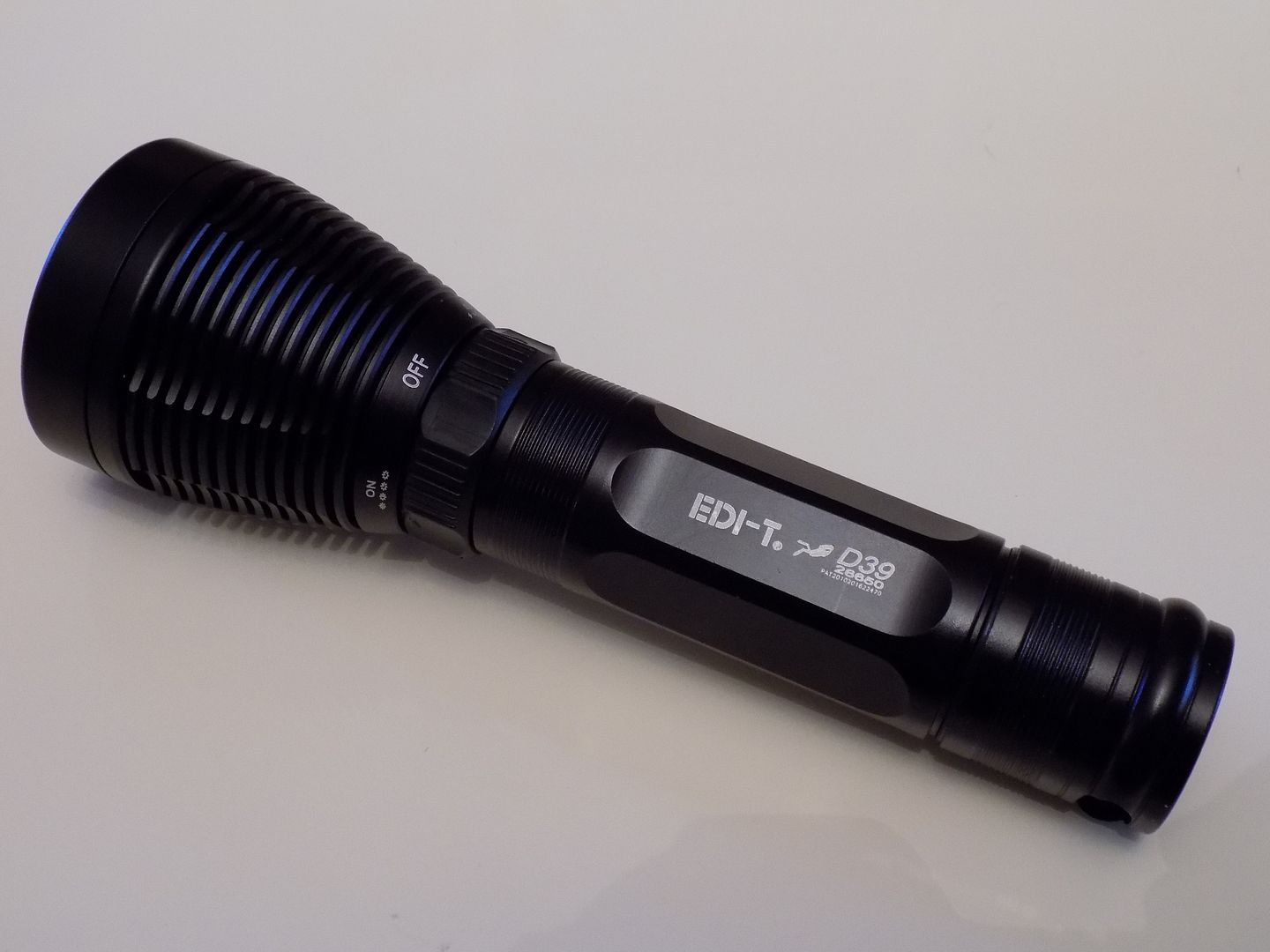
^ Side-view ^
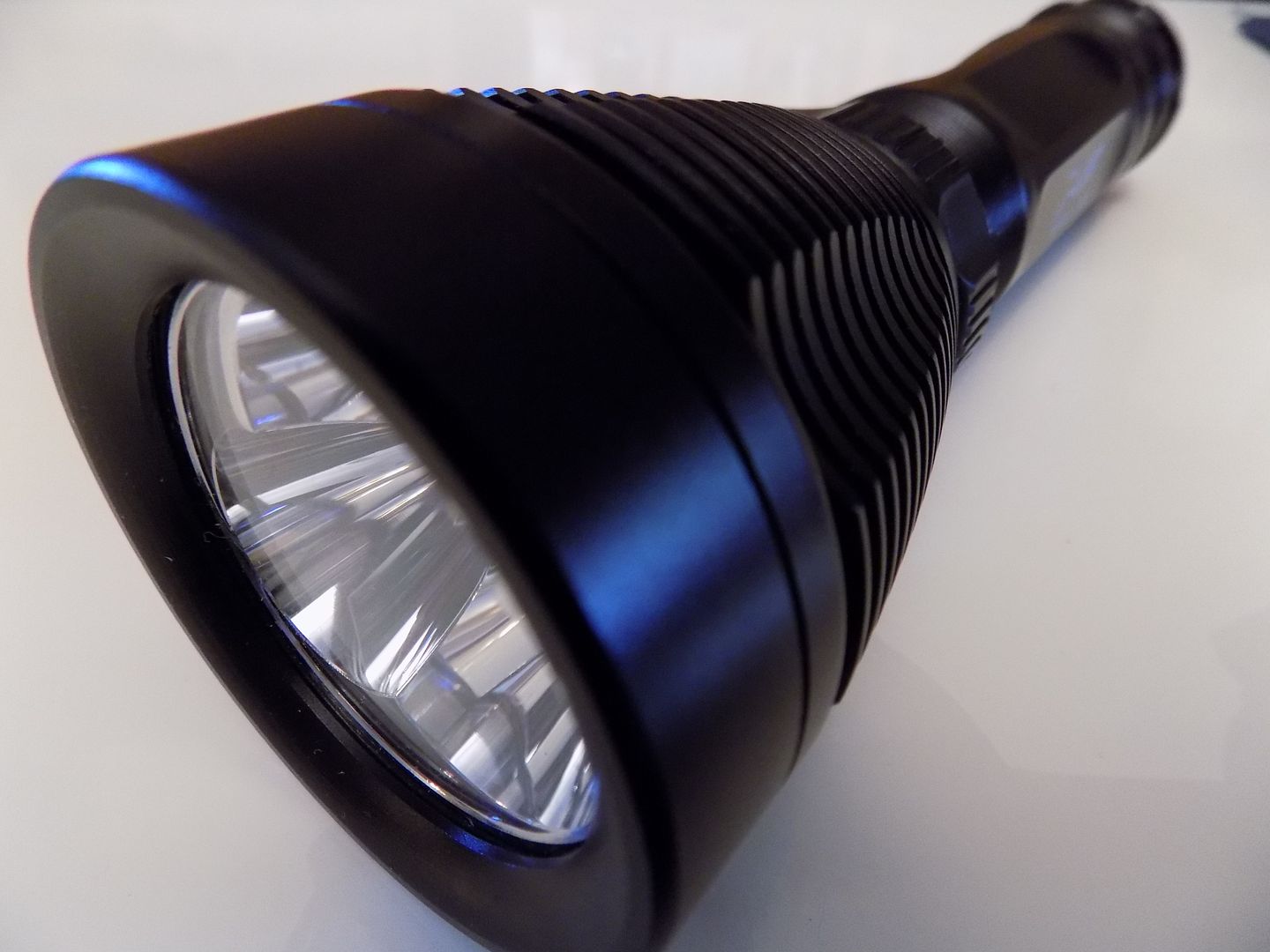
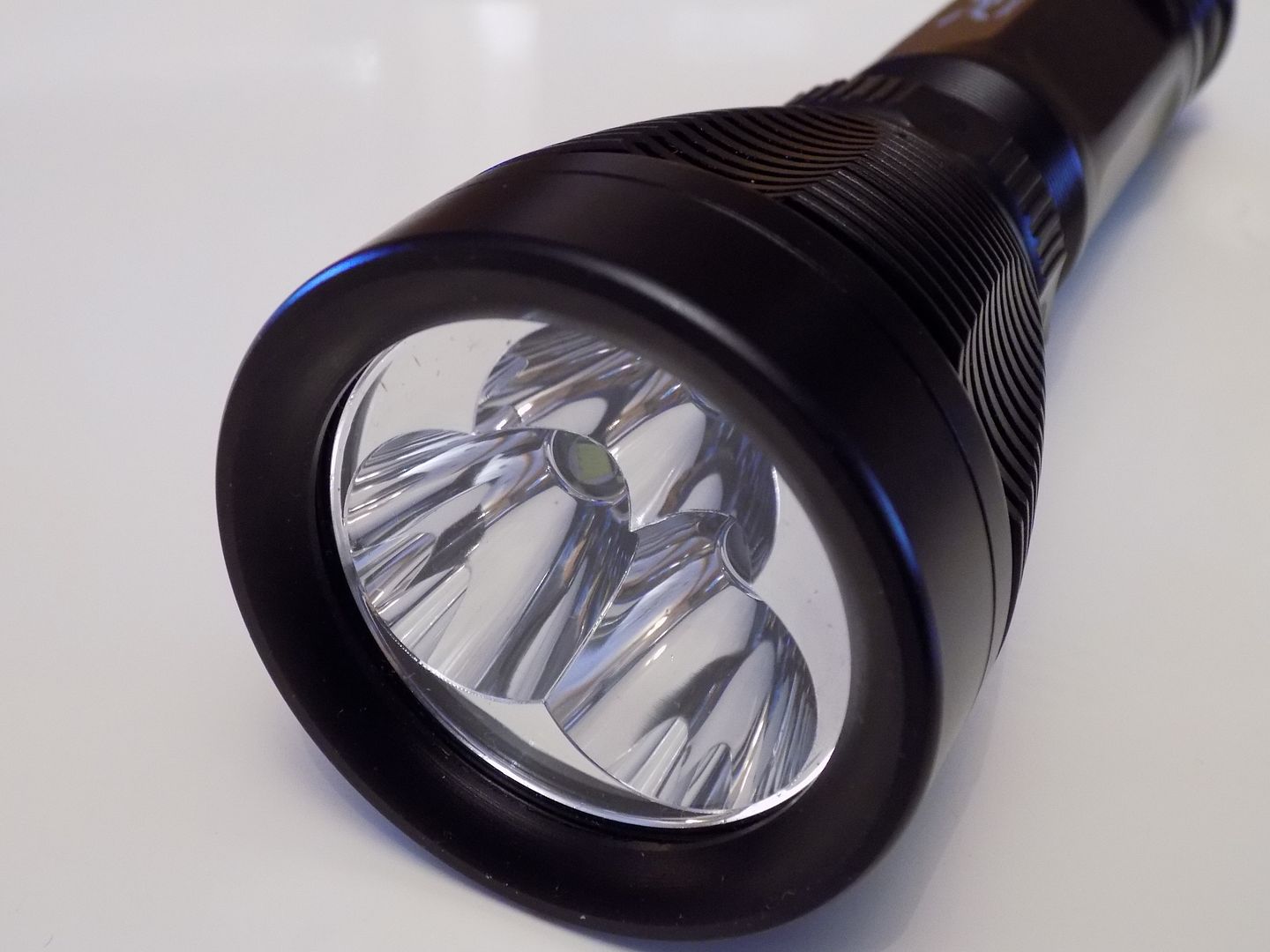
^ Alternate views ^
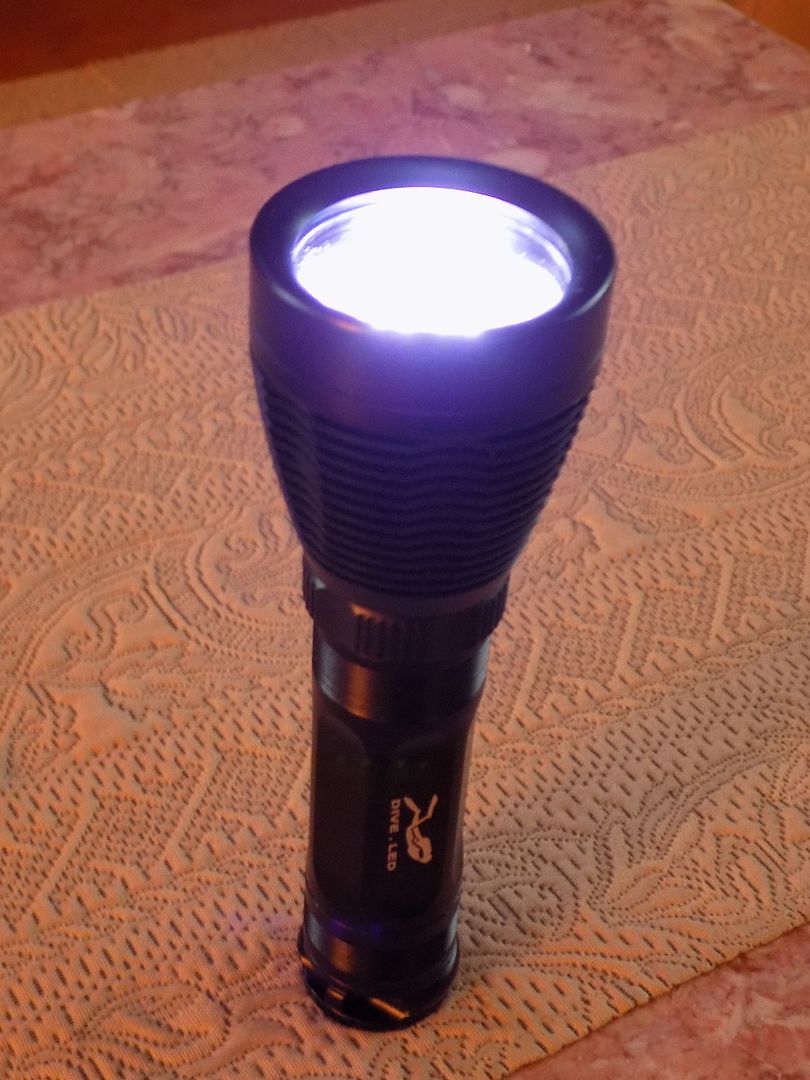
^ Tailstanding ^
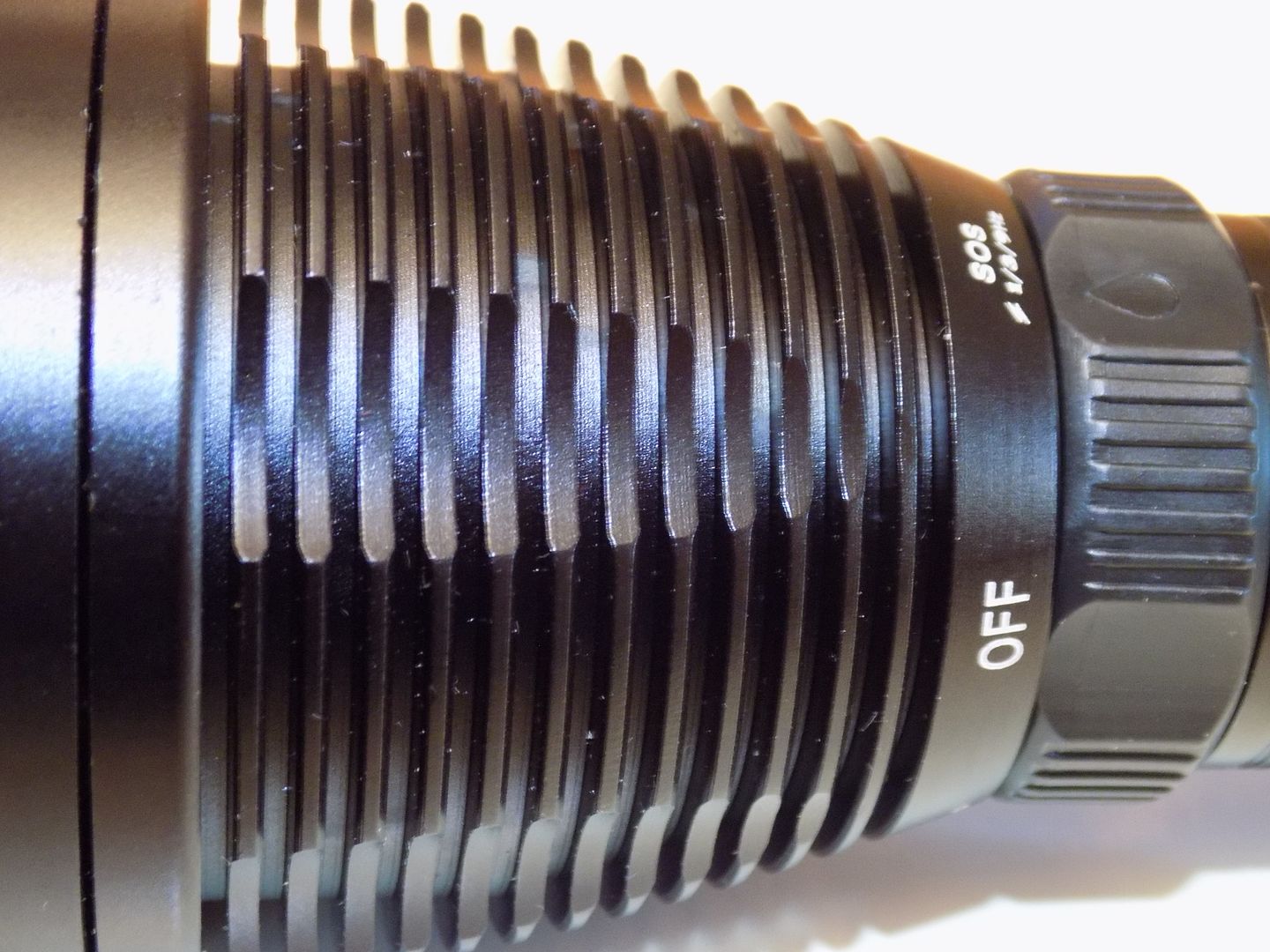
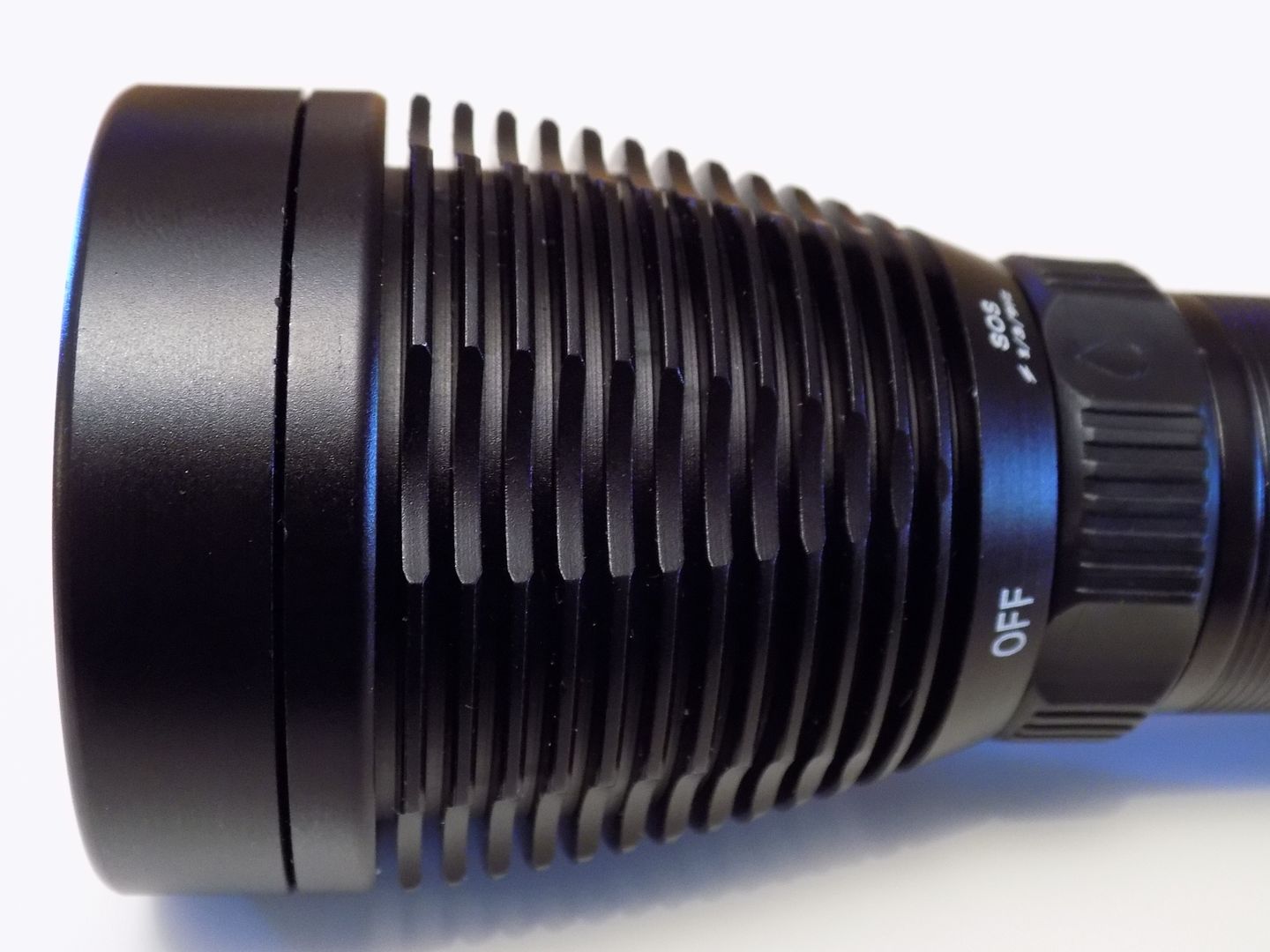
^ Sideview of cooling fins ^
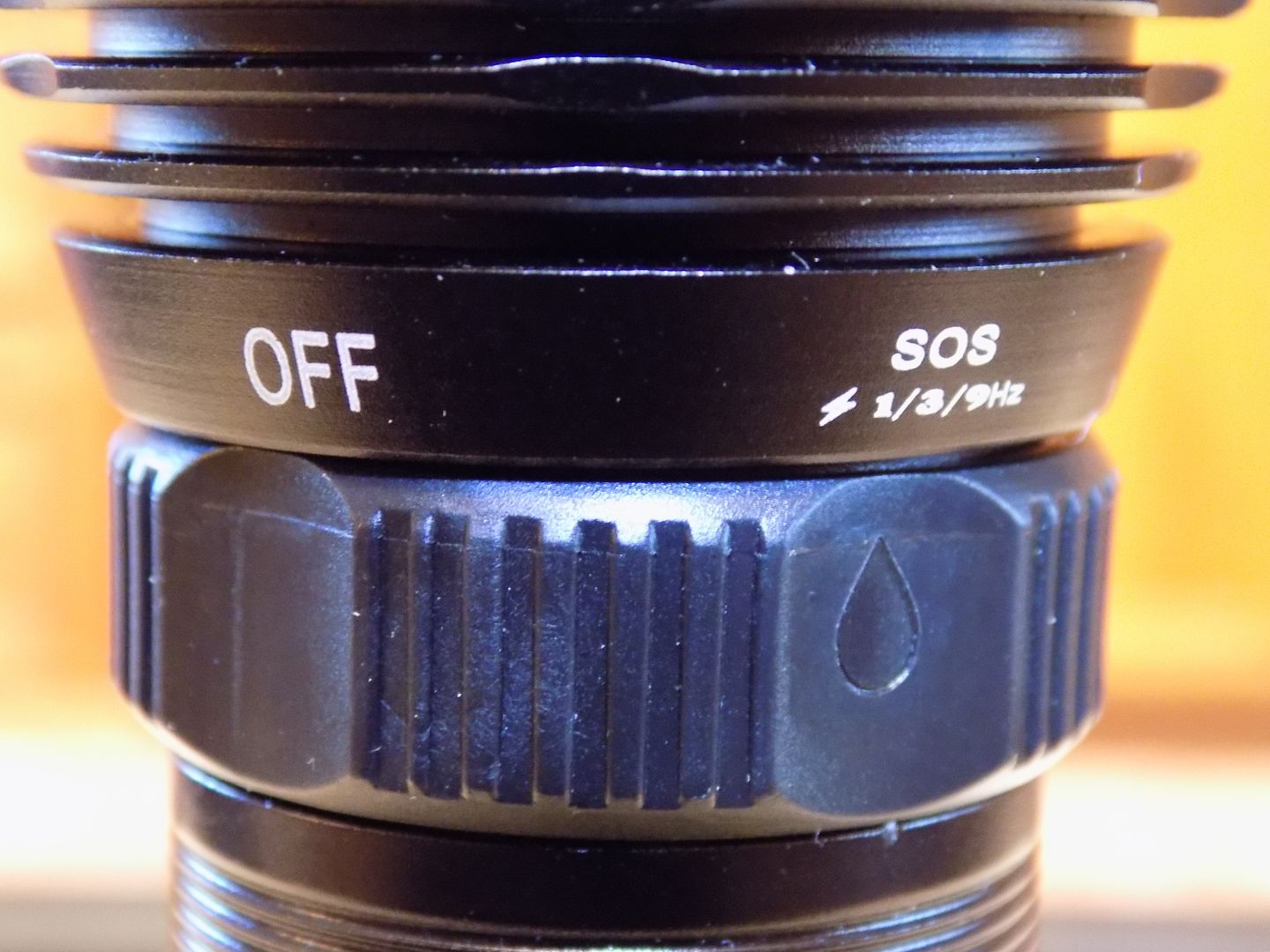
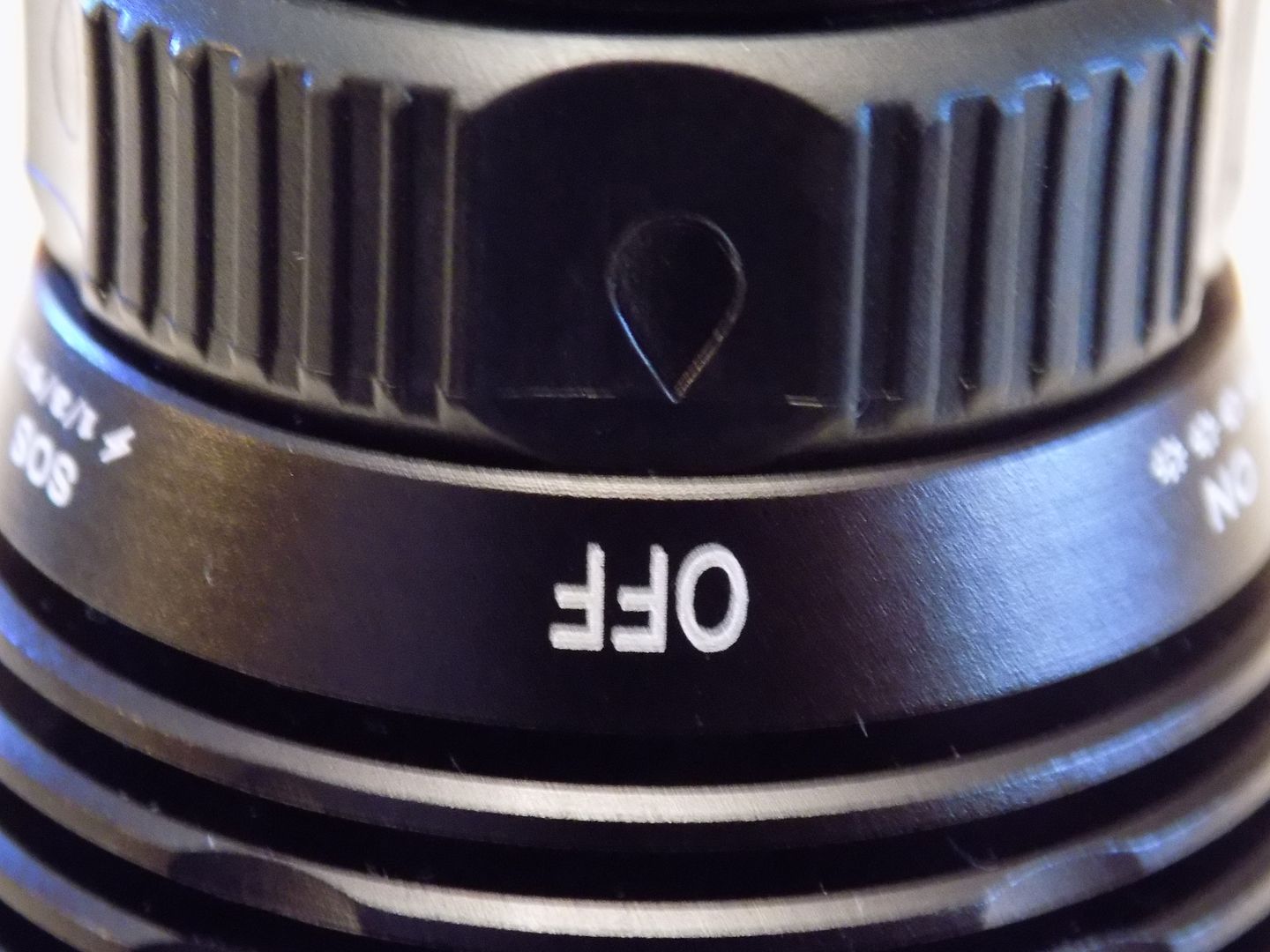
^ Magnetic control ring ^
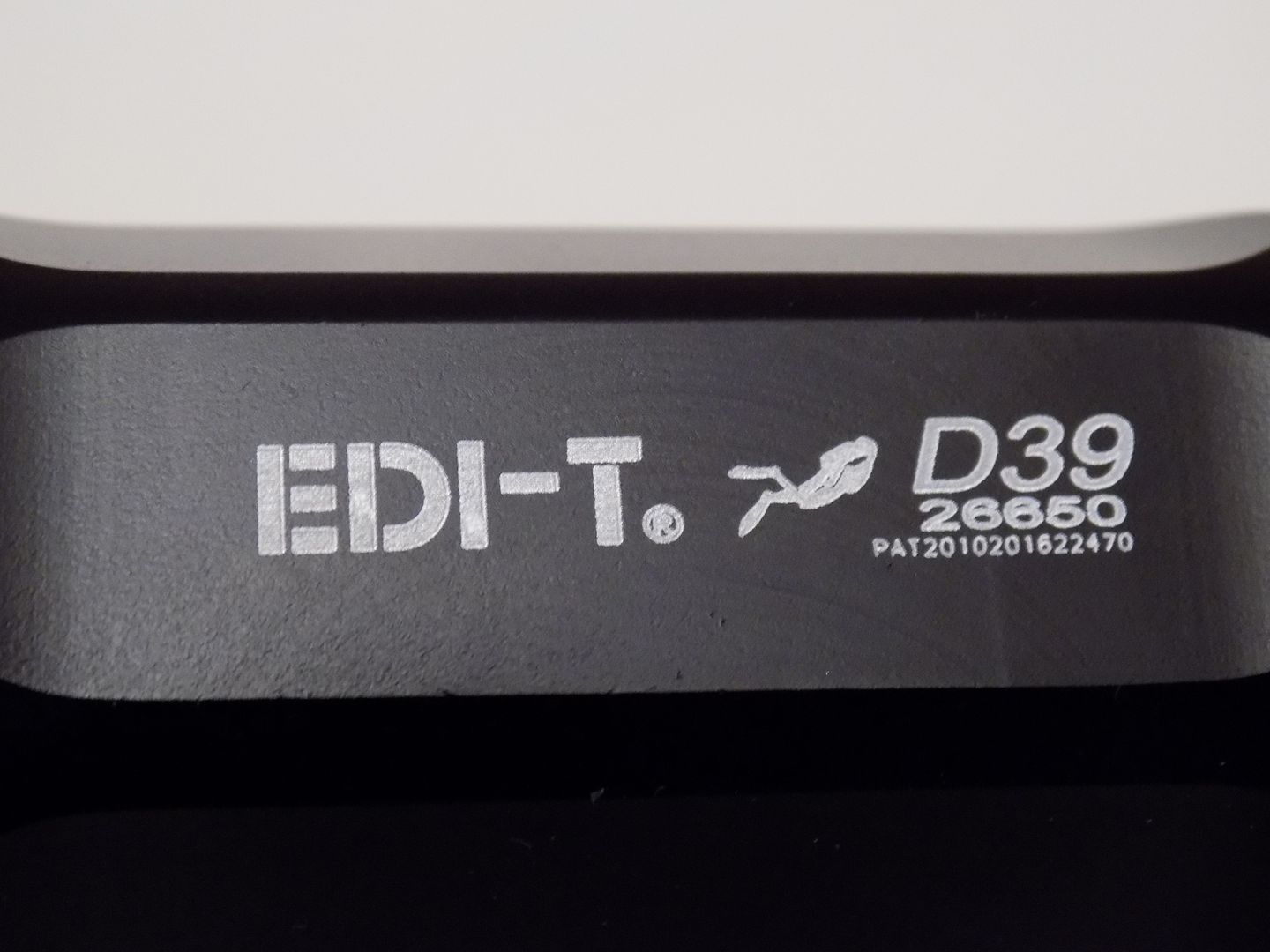
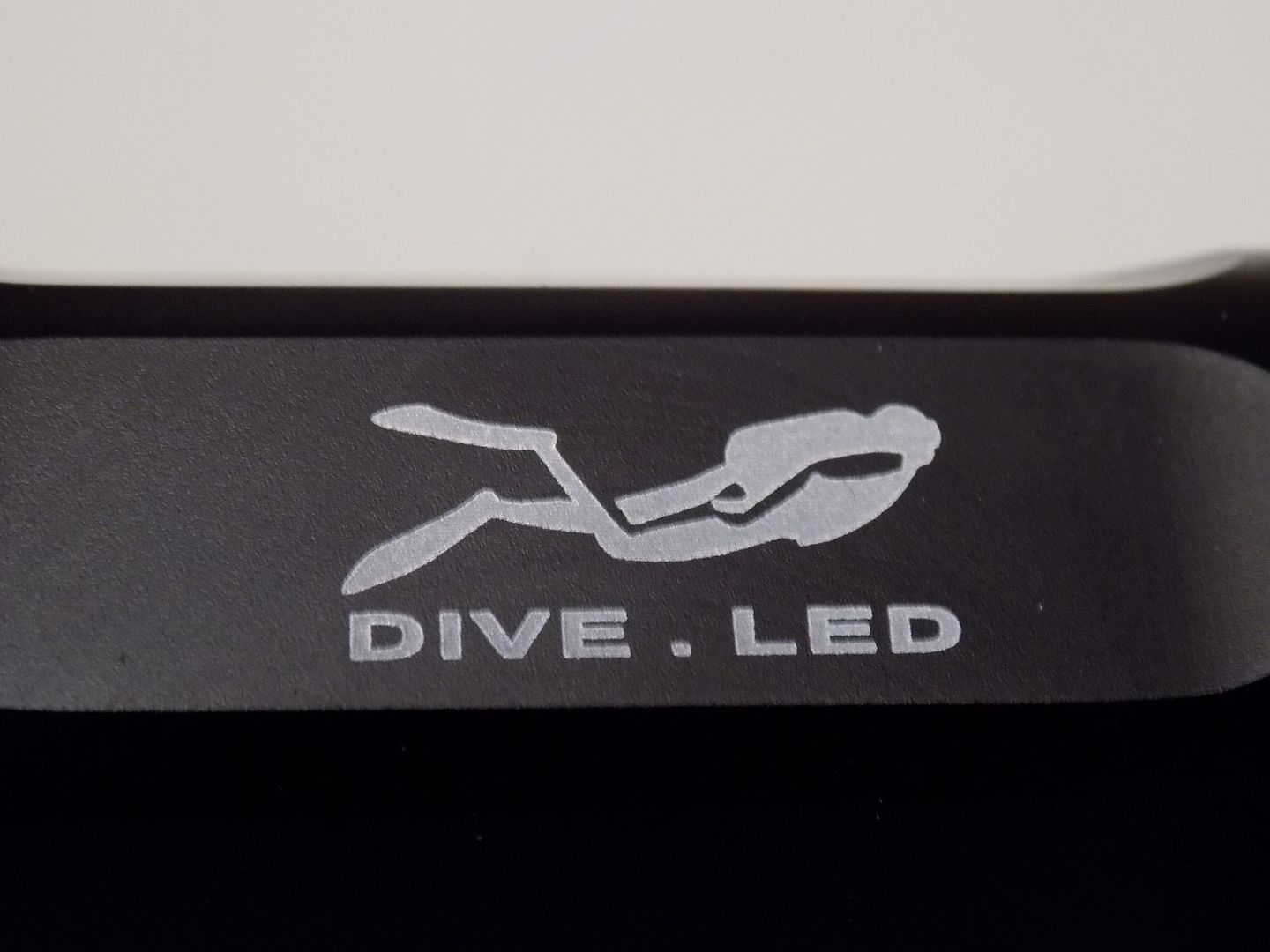
^ Logos ^
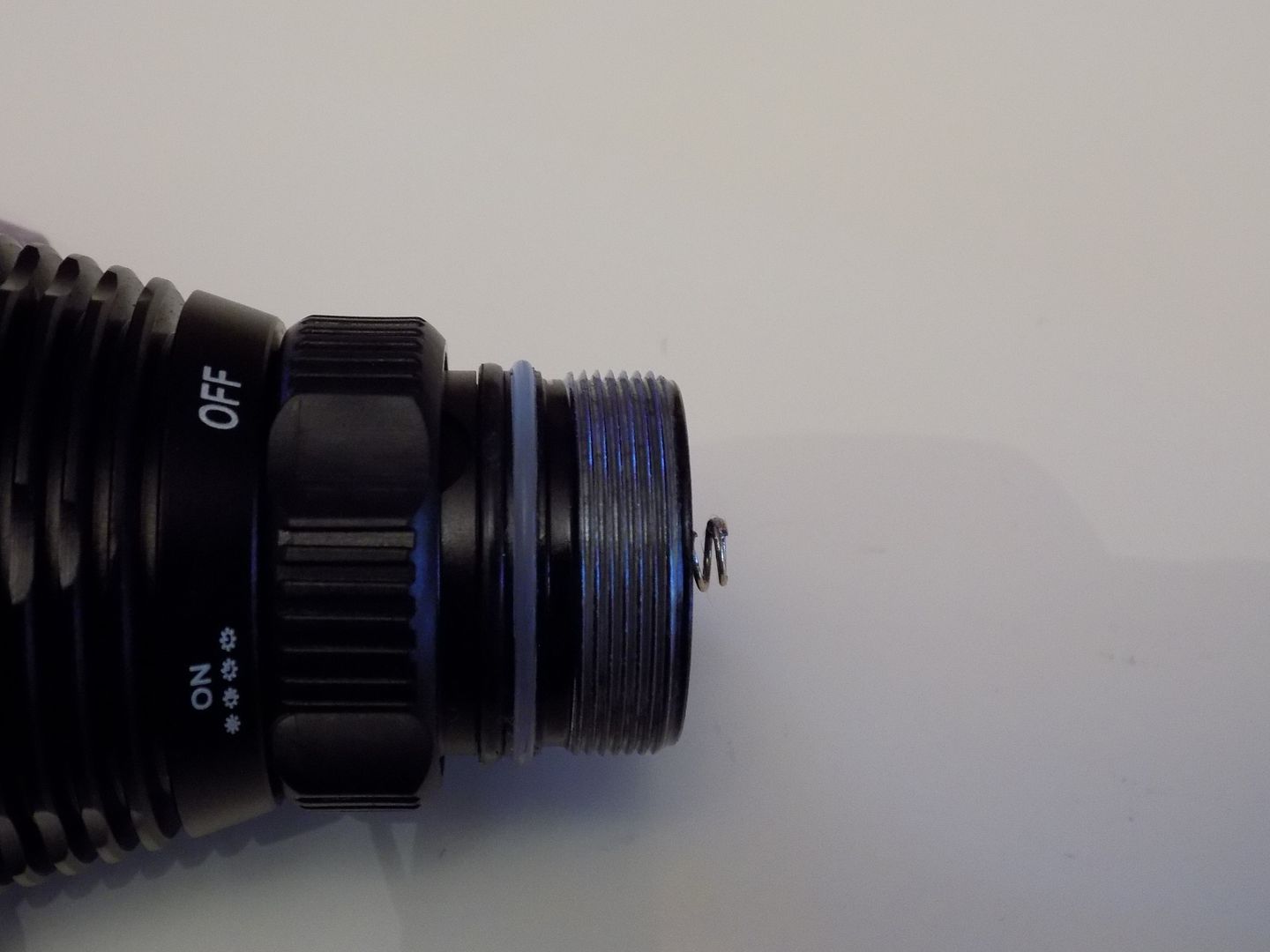
^ Head separated ^
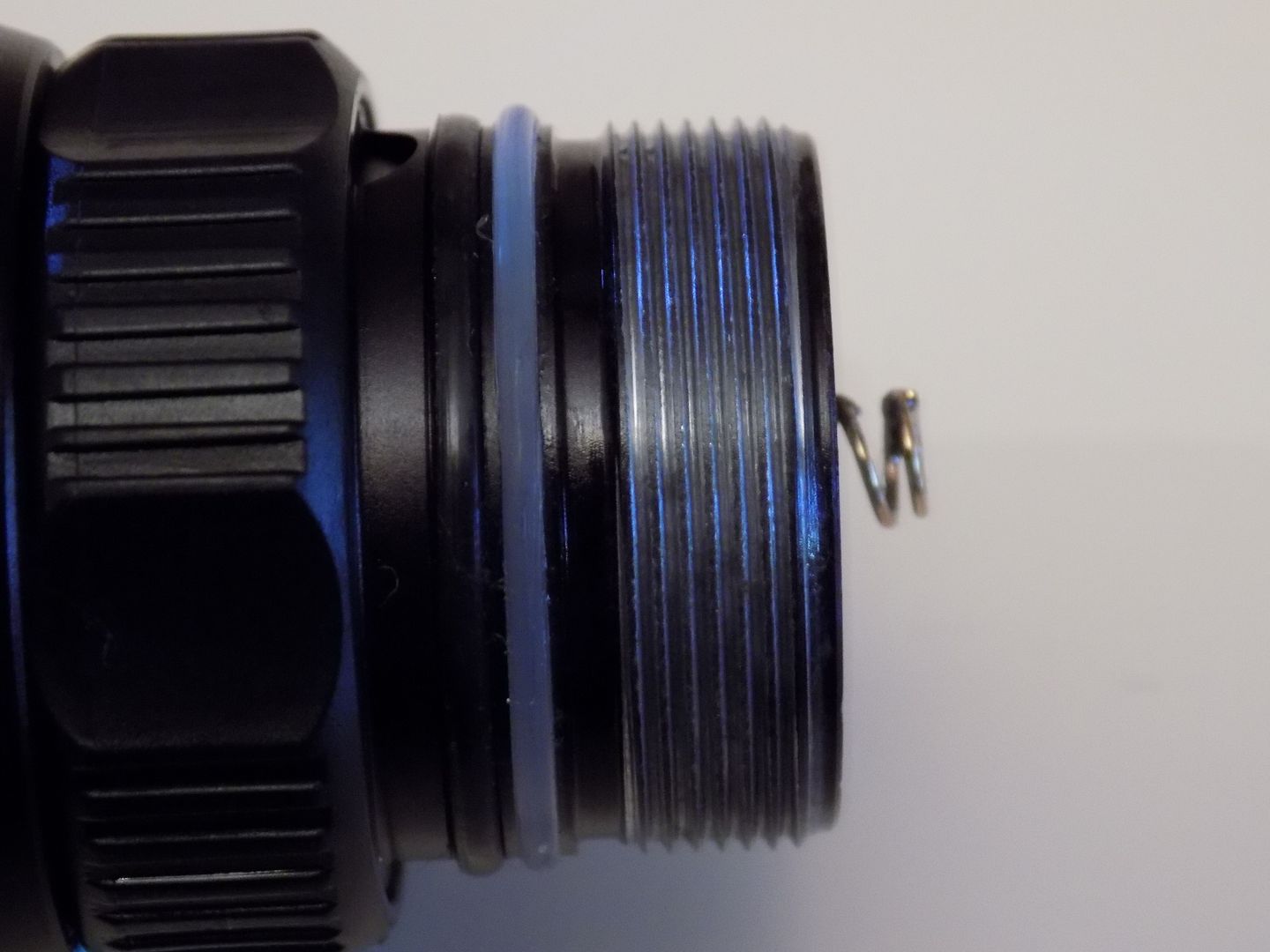
^ Driver side threads. Notice the double seal…one black and one clear ^
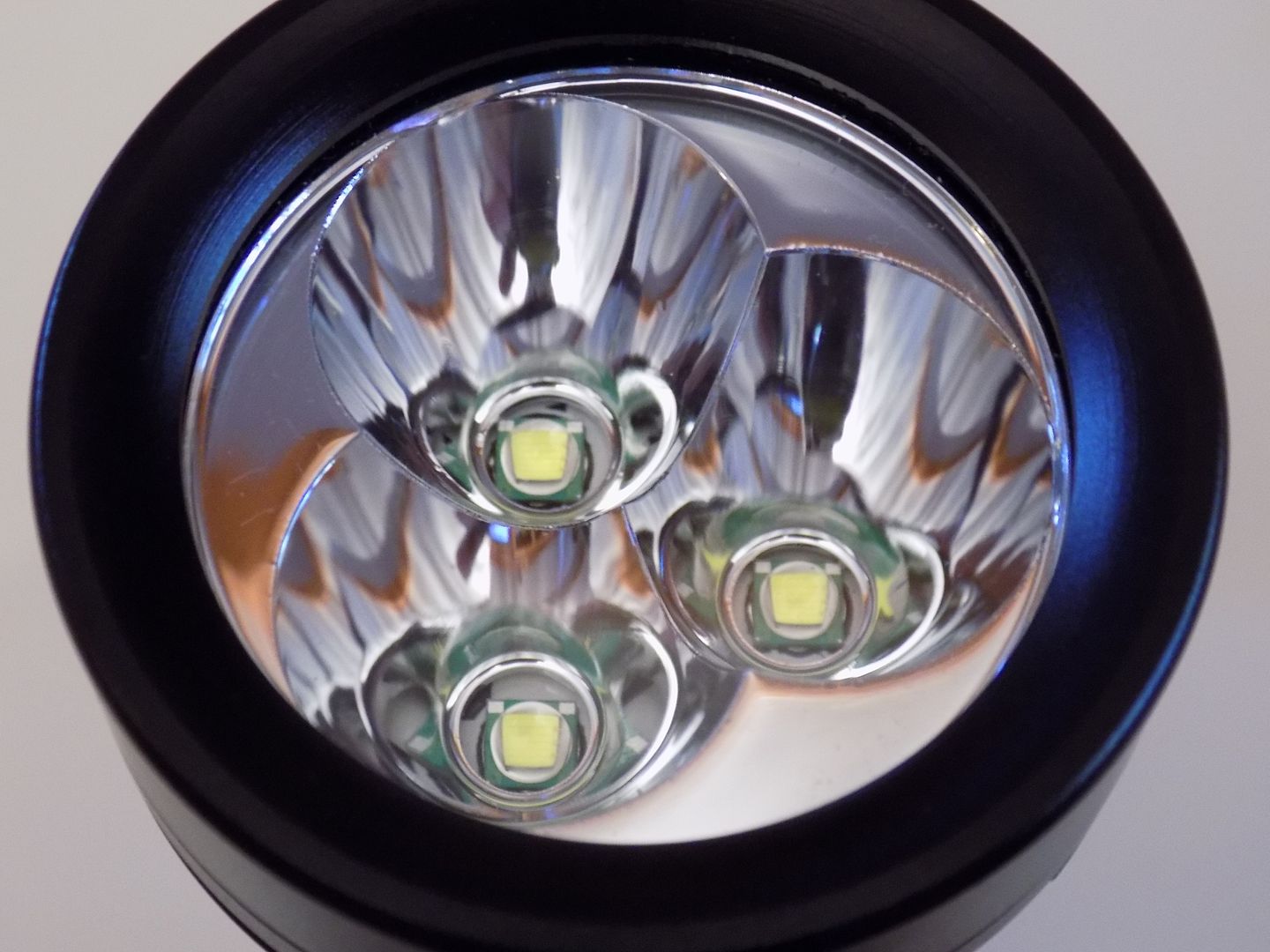
^ LED view. Notice off-center emitters ^

^ In hand ^
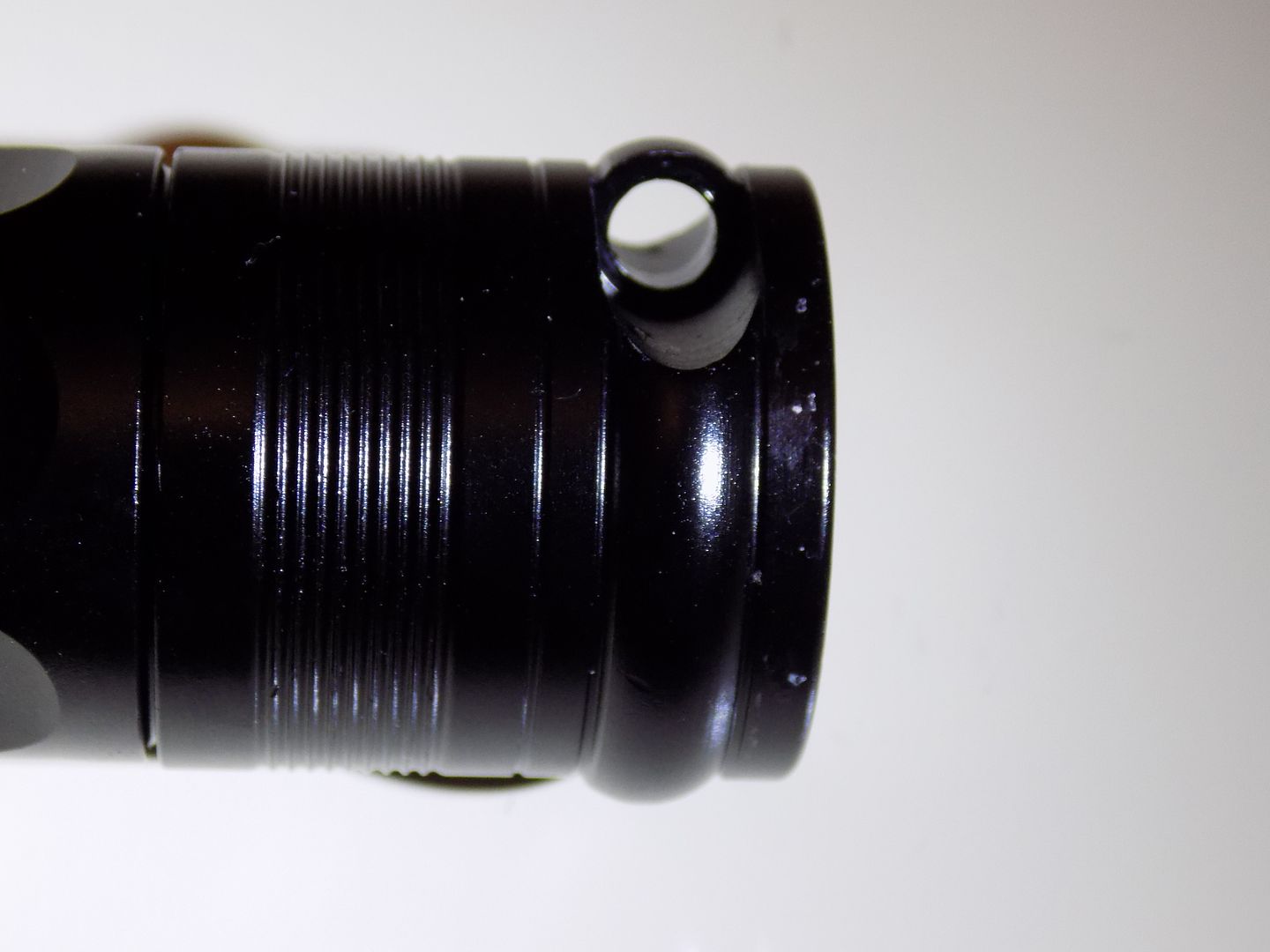
^ Tailcap with sizeable side lanyard hole ^
DECONSTRUCTION
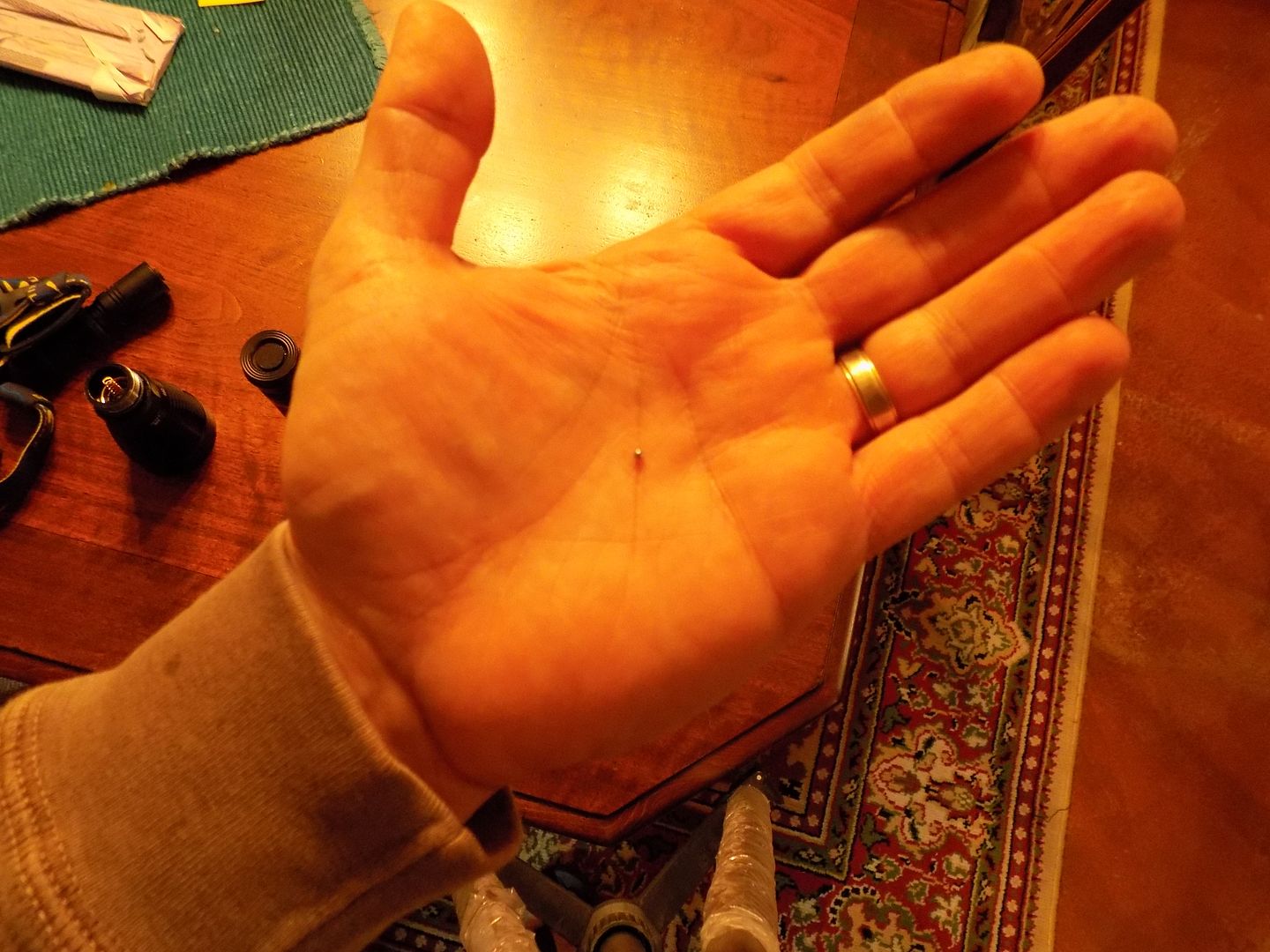
^ Be very careful removing battery tube from driver side of light. This can loosen the switch ring enough where the ball detent can fall out. I was lucky enough to find this small sucker after dropping on the floor 3 times! ^
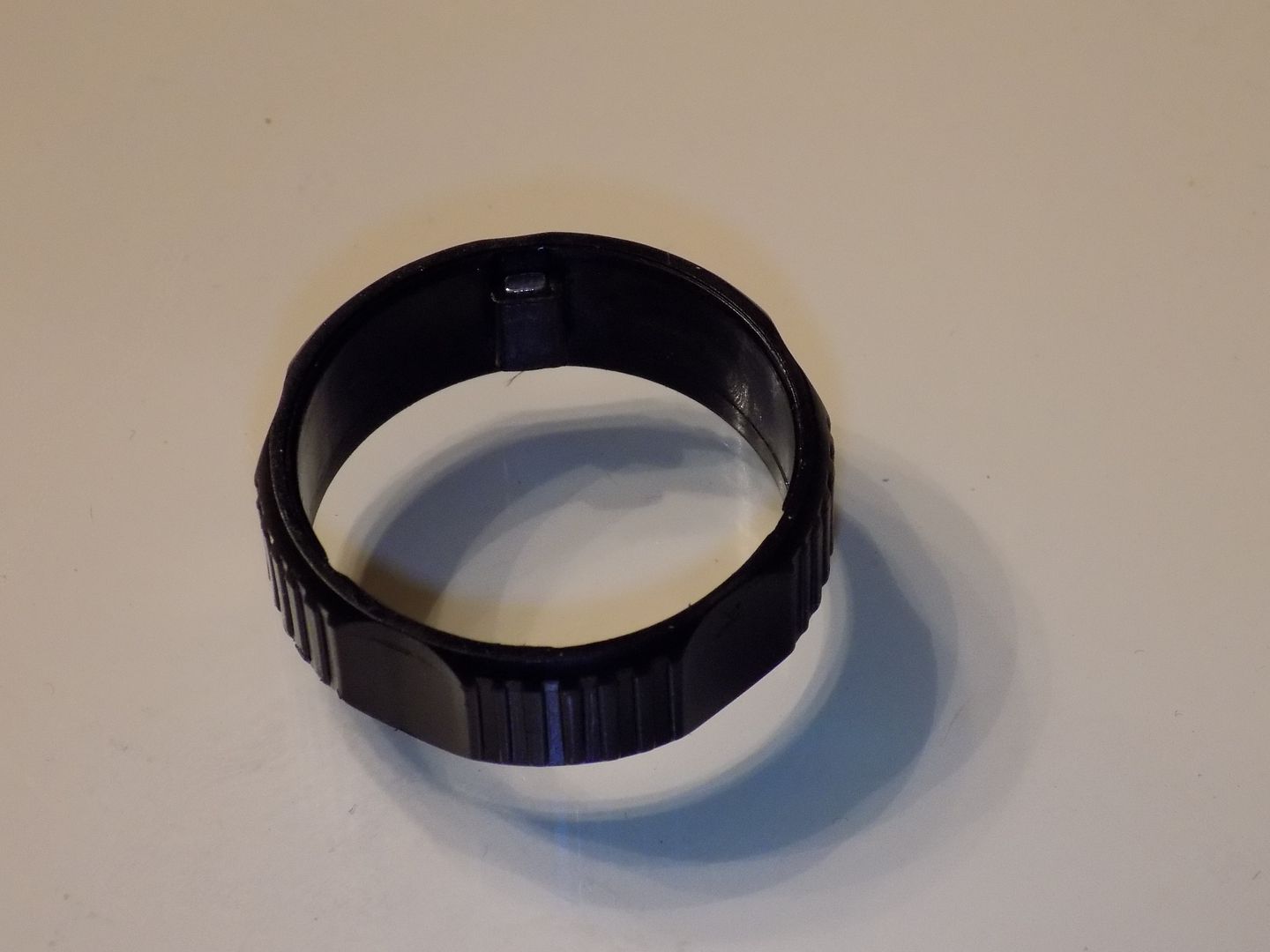
^ Control ring removed. There is actually a magnet which you can see at the 12 o’clock position ^
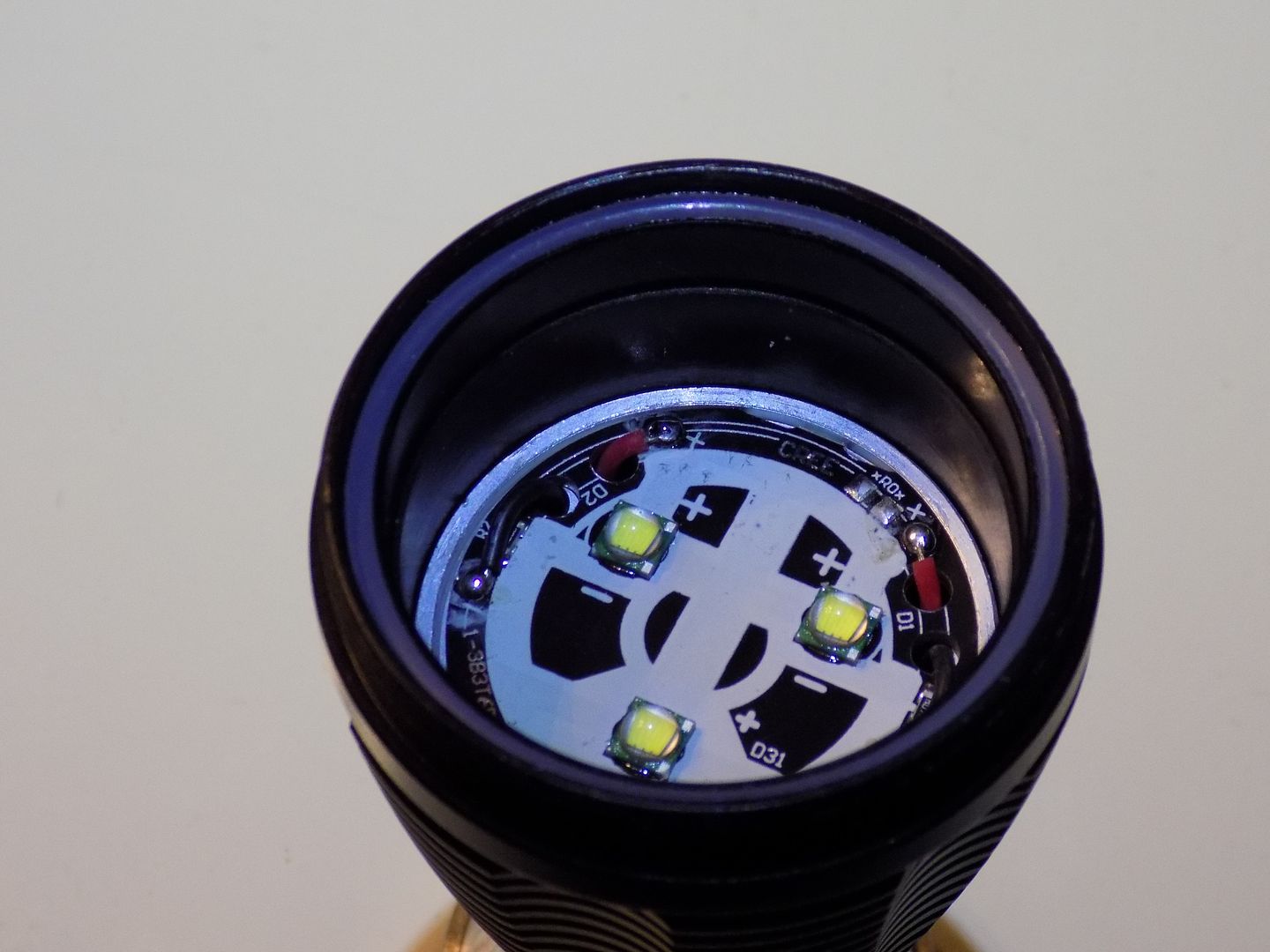
^ Open head, top of MCPCB, emitter view ^

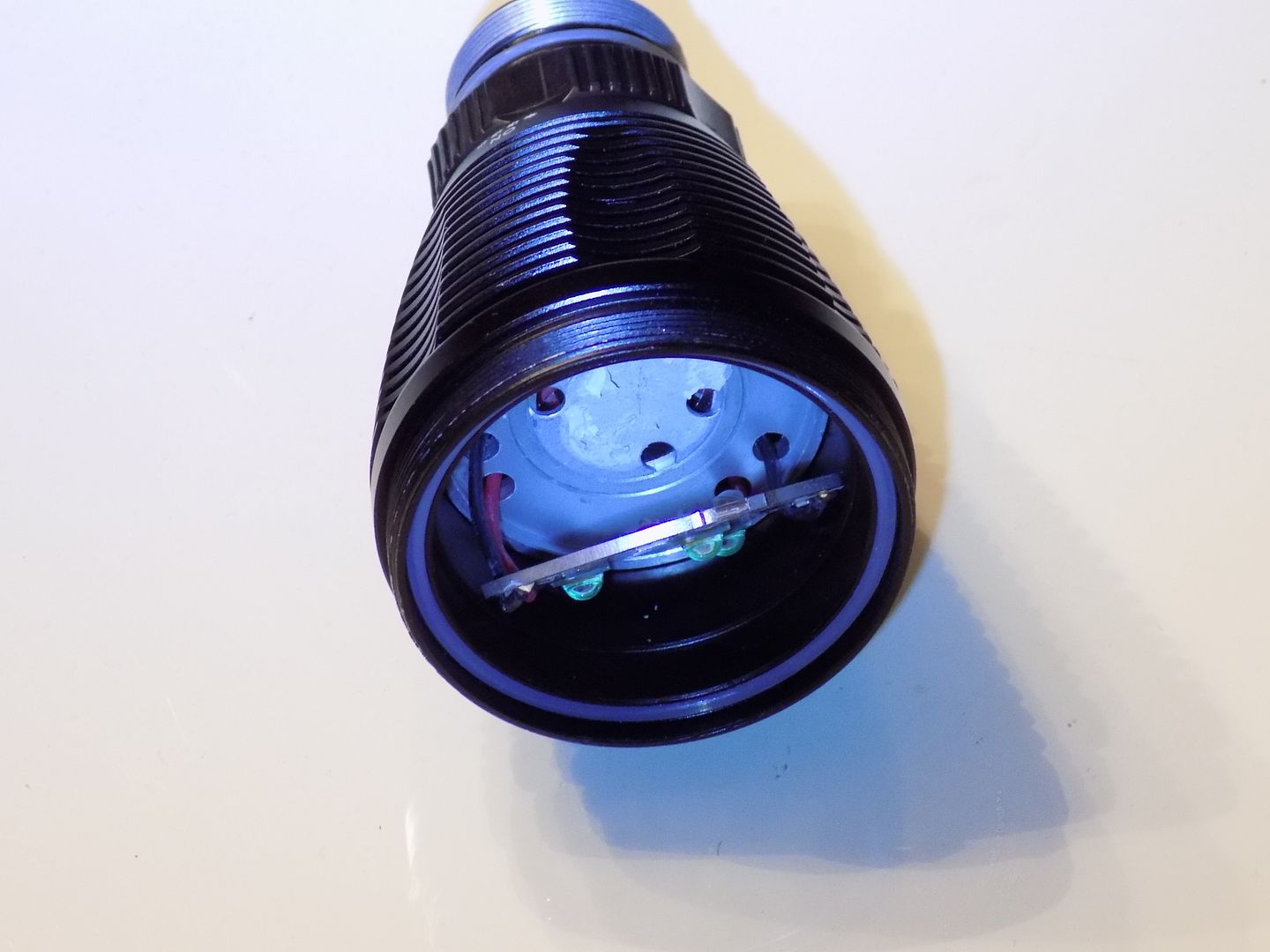
^ Underside of emitter. Notice the center of emitter shelf is stepped down from the outside of the shelf. WHY? ^
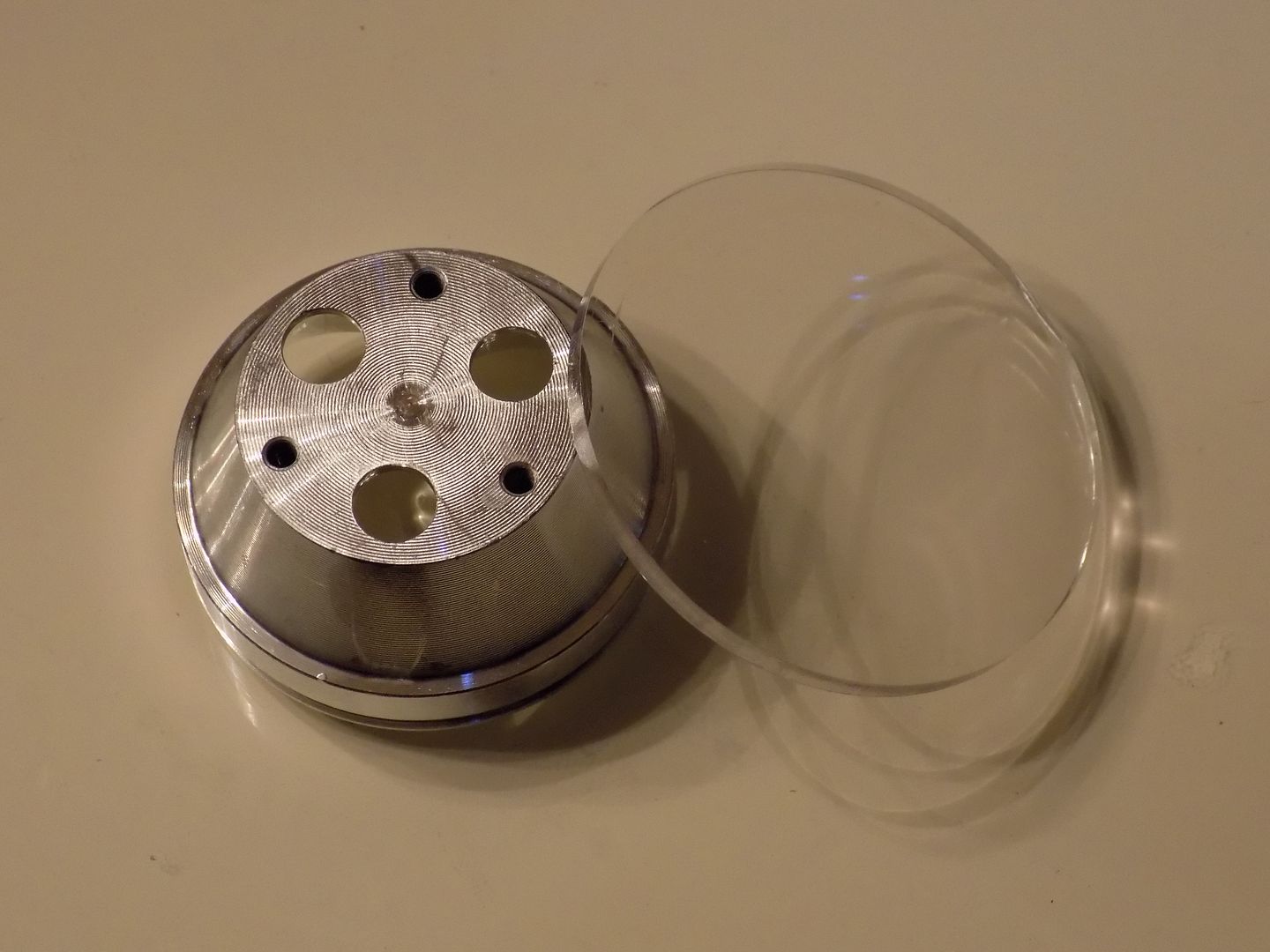
^ Bottom of reflector and lens ^
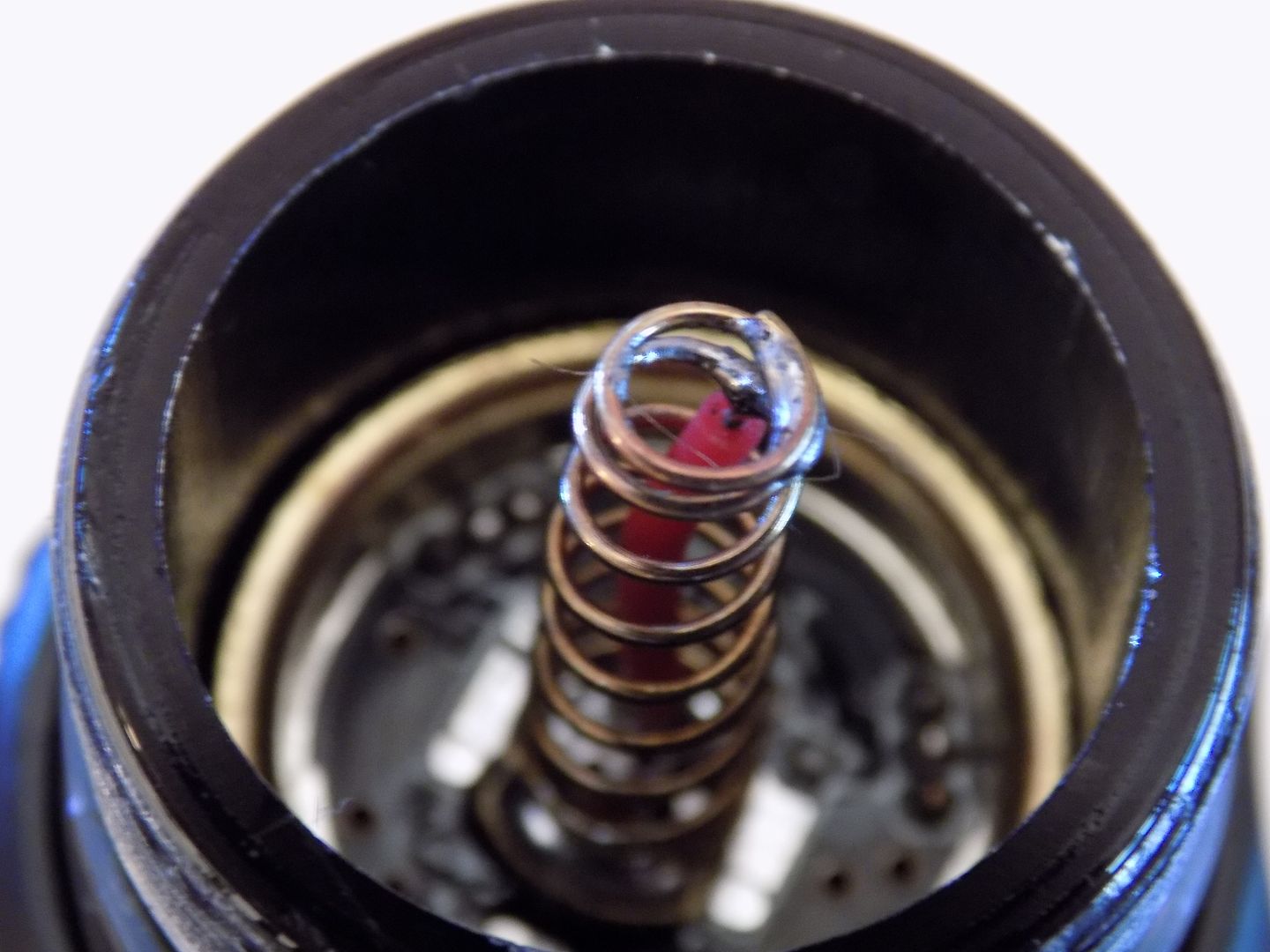
^ Spring bypass mod. Focus on spring ^
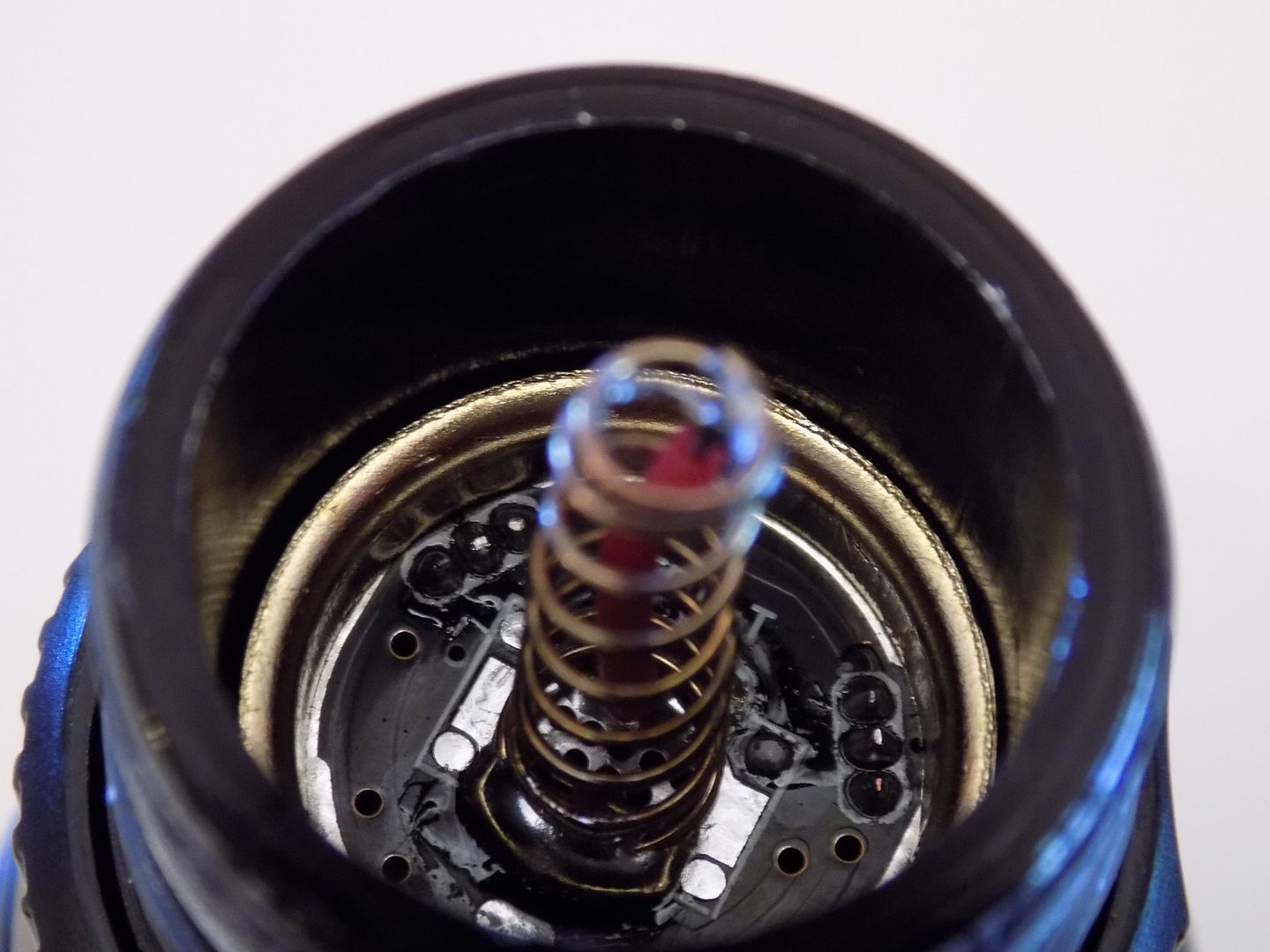
^ Spring bypass mod. Focus on driver. ^

^ Inside battery tube. 3rd internal battery tube seal (driver side) on the left. ^
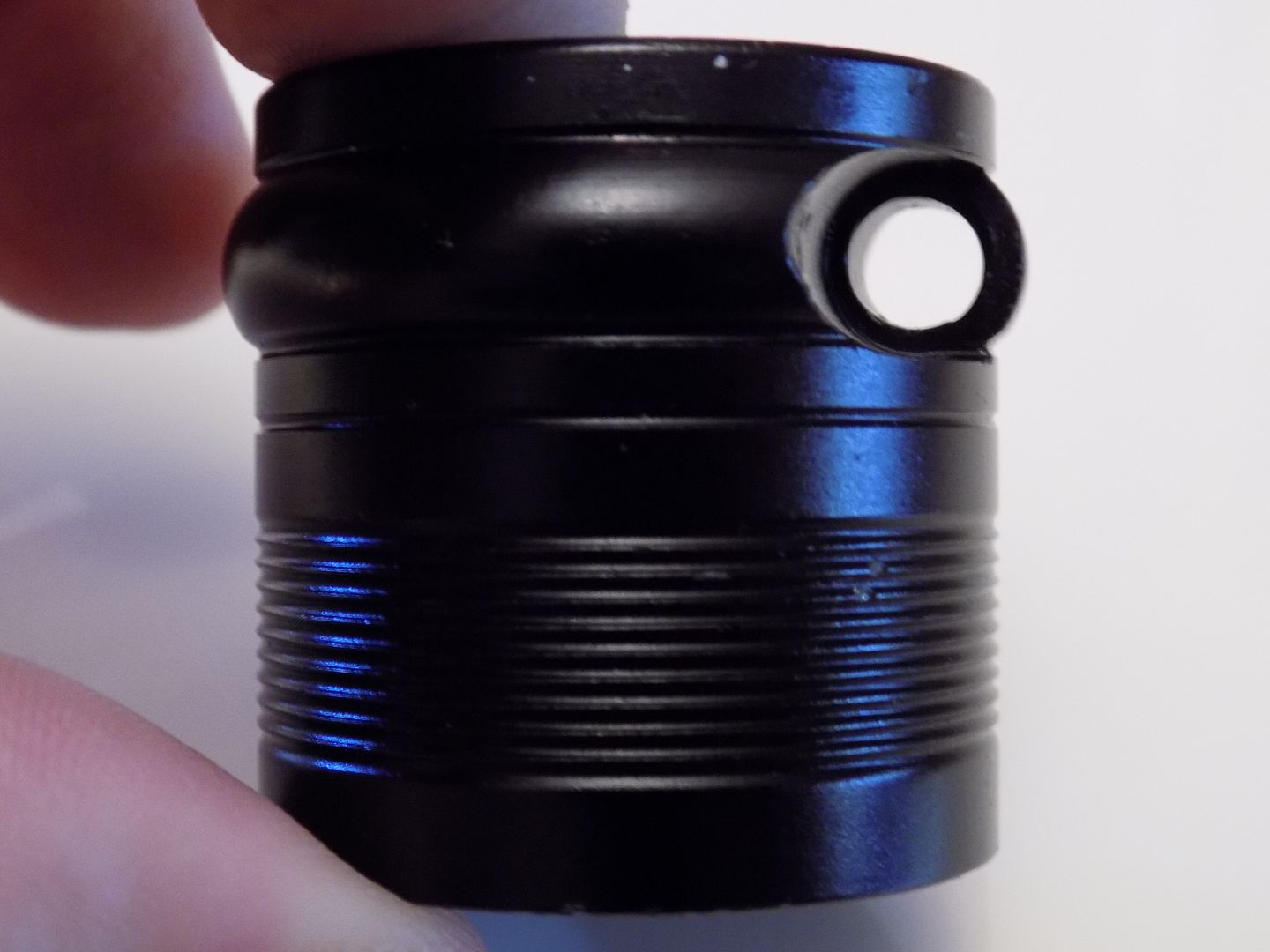
^ Tailcap ^
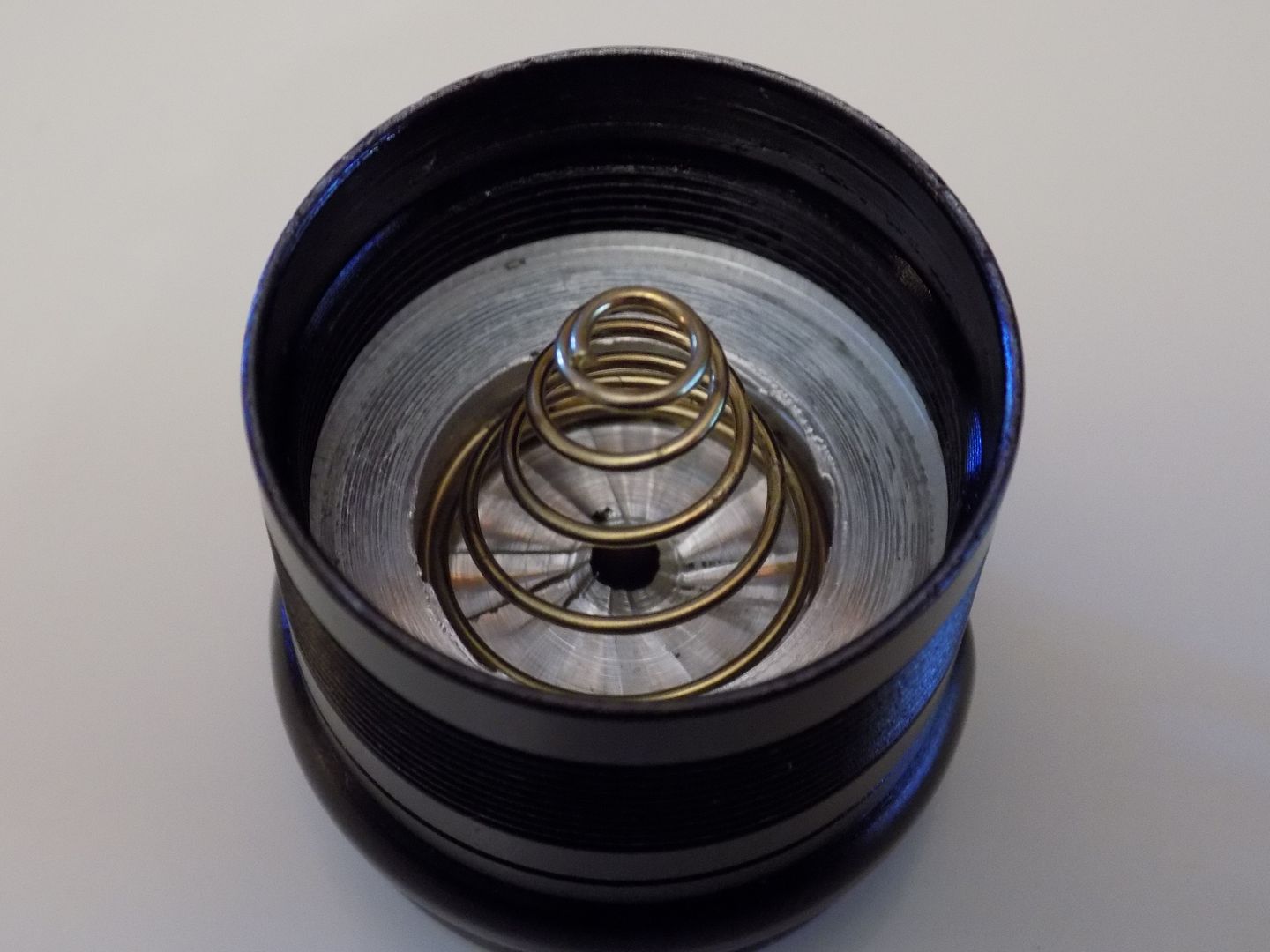
^ Tailcap spring ^

^ Tailcap threads, double seal ^
UNDER WATER
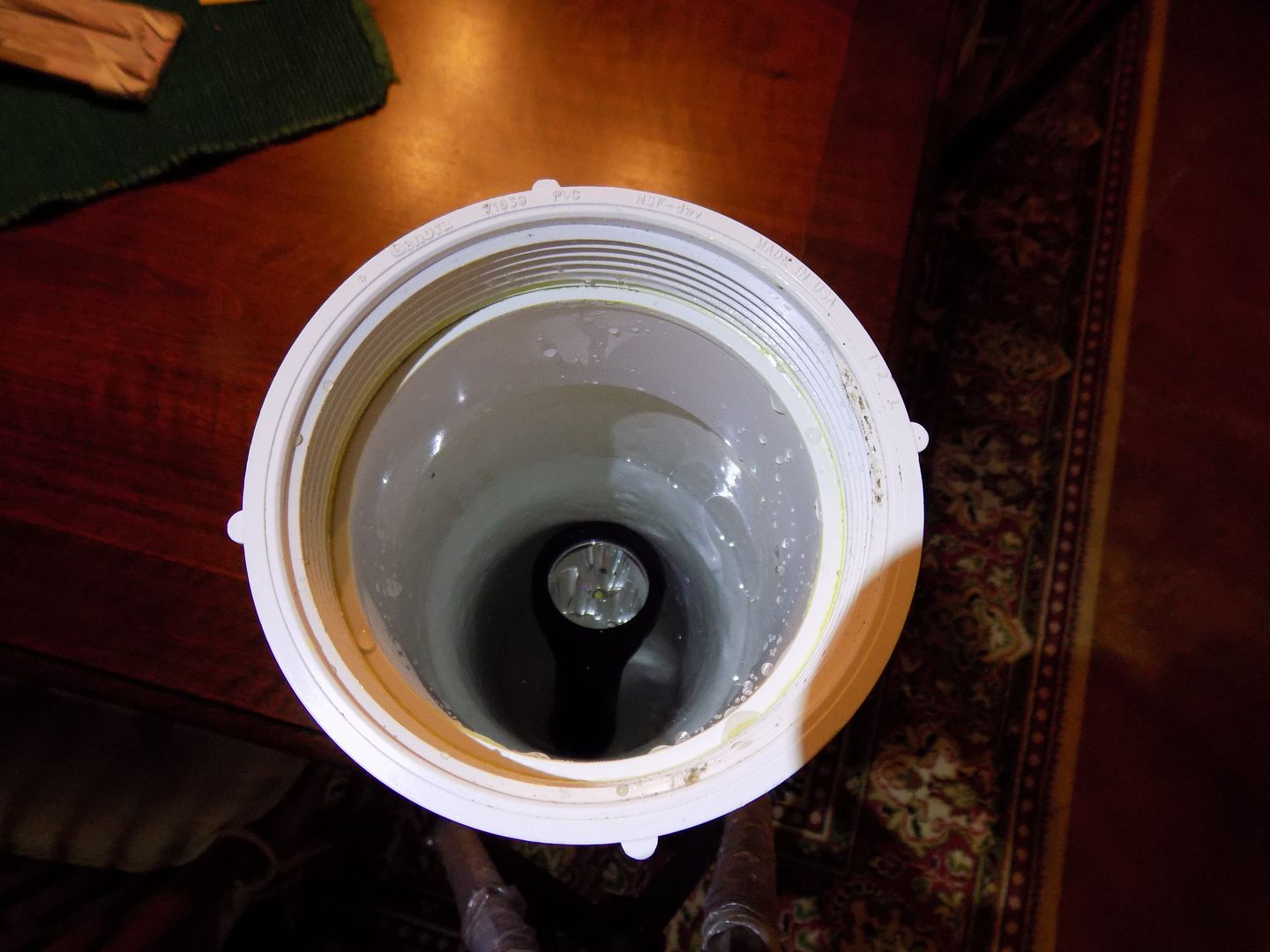
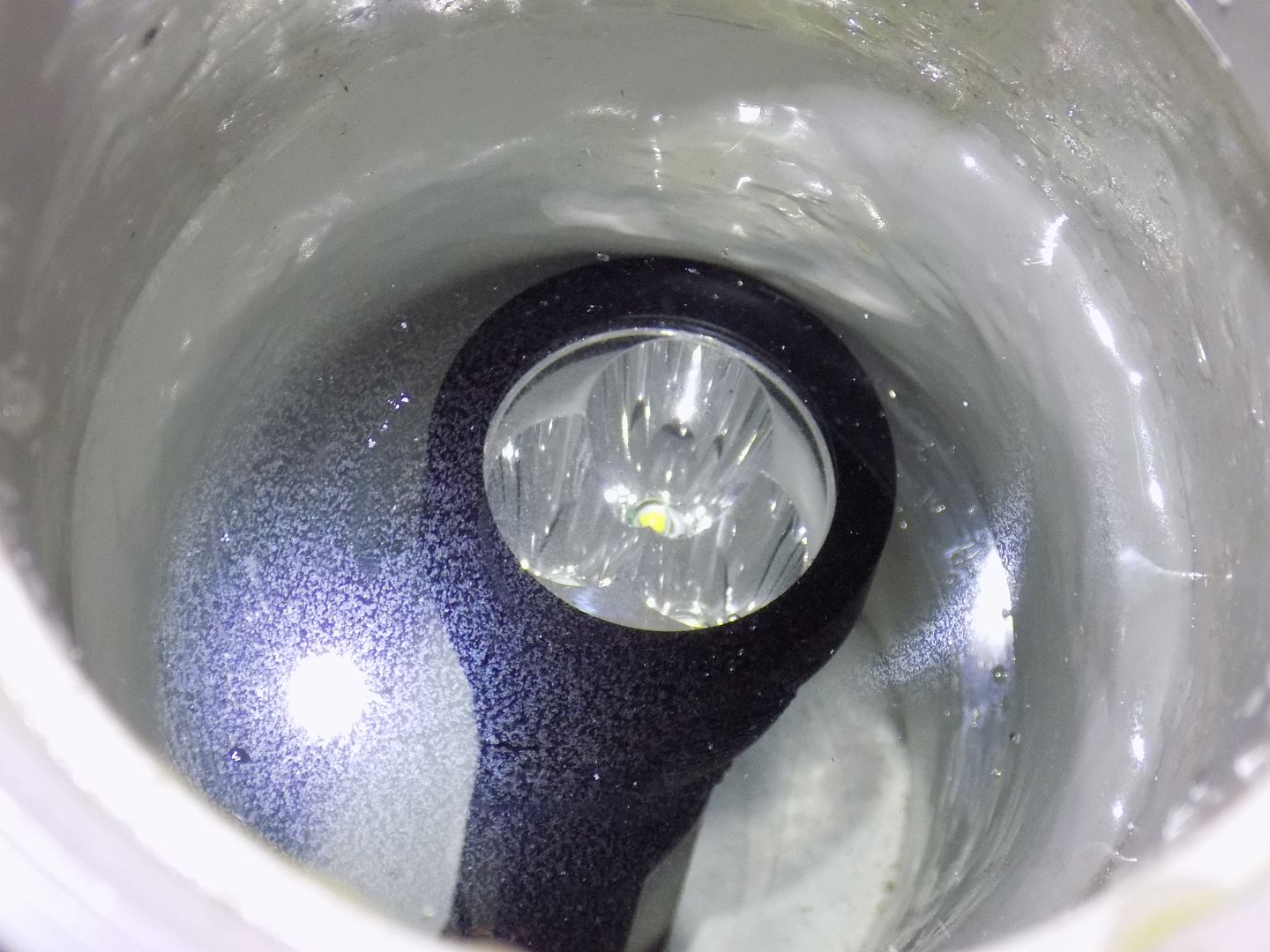
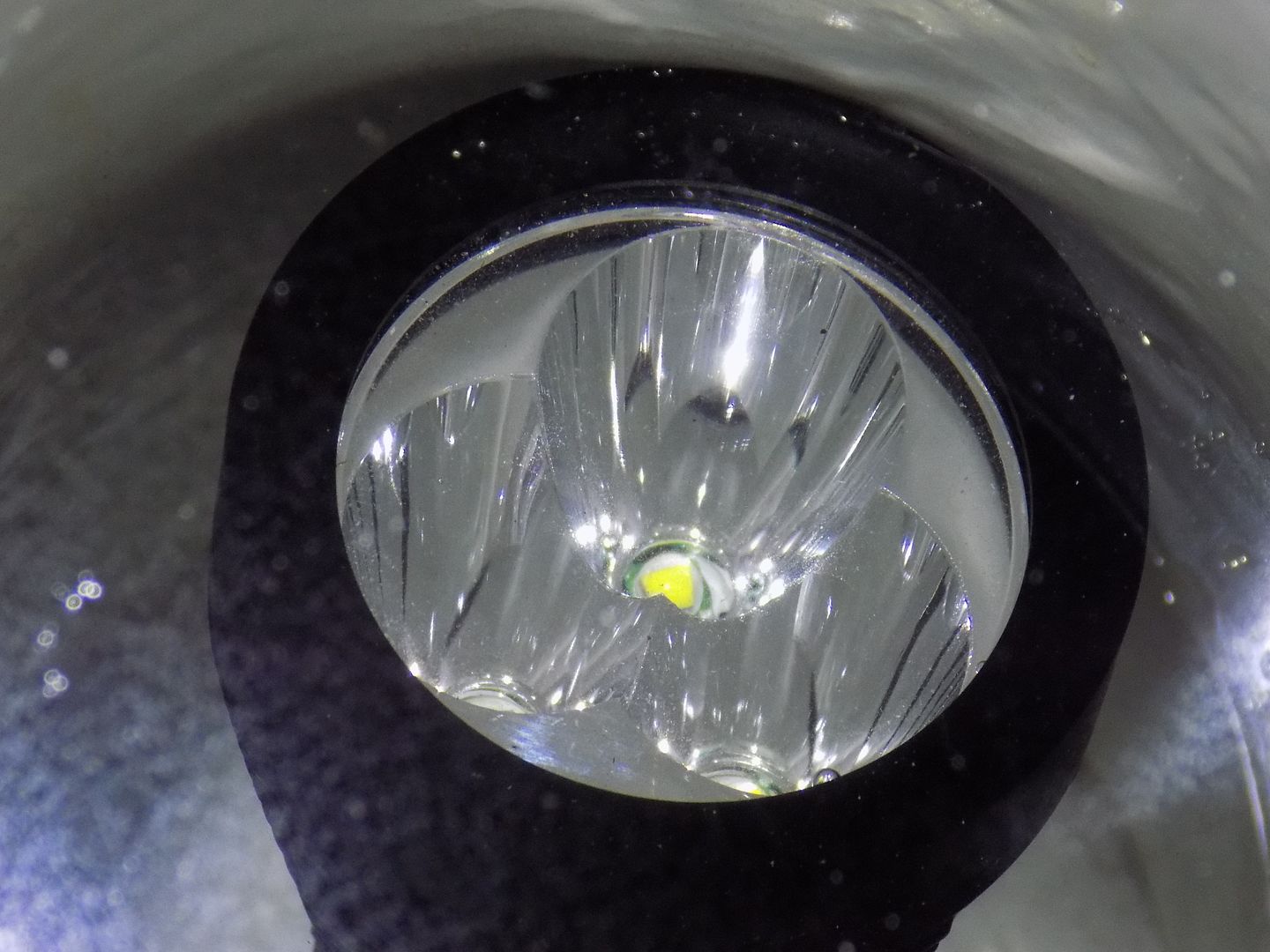
^ Shots of light in non-working hydrostatic pressure chamber. I could not get chamber to seal properly. Nevertheless, I left light under water for 7 days and absolutely zero leaks. Obviously not the same as under pressure. Once (if :8) ) I get chamber operational, I will edit this review ^
BEAMSHOTS/NIGHTSHOTS:
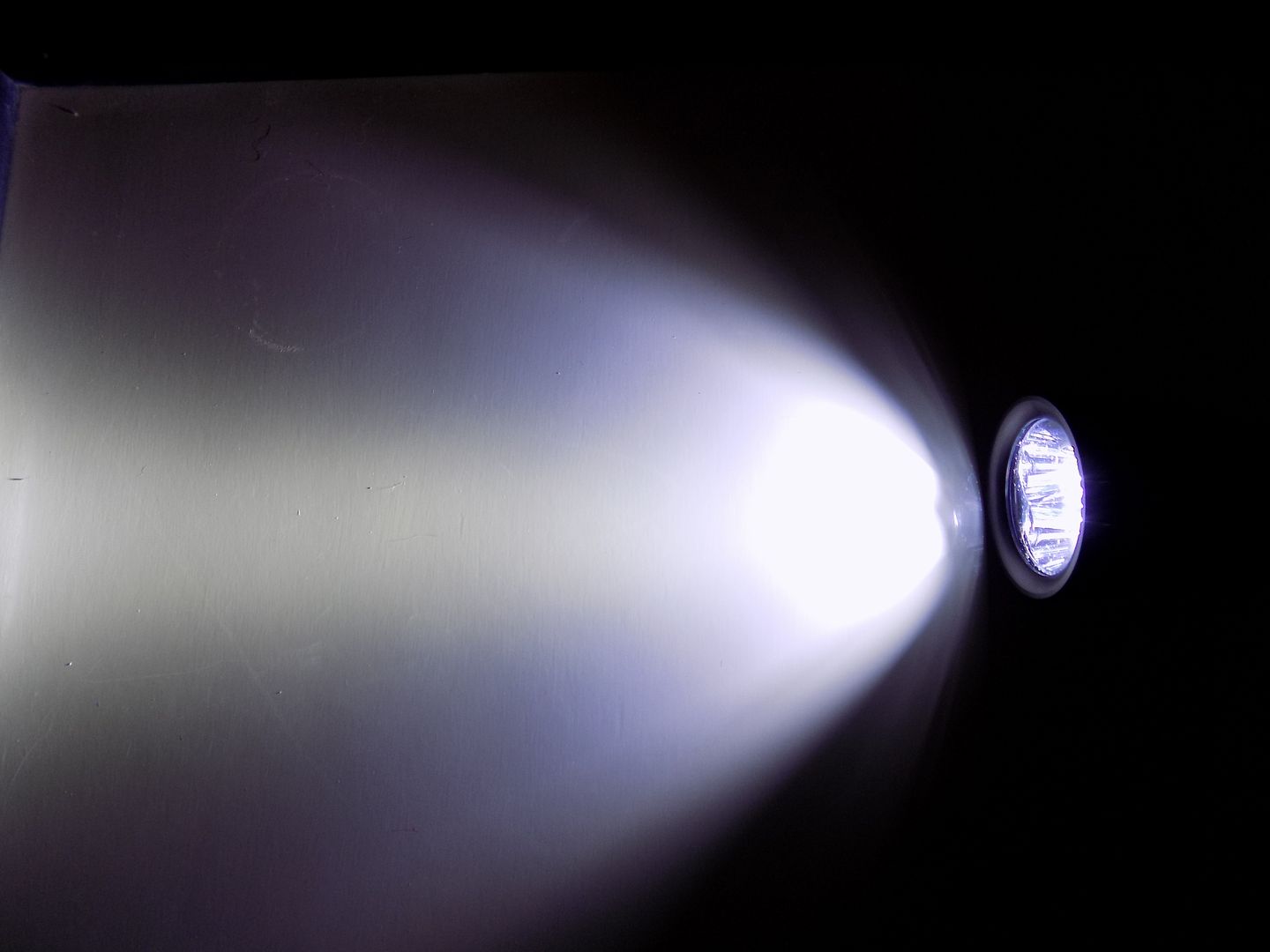

^ Side-view of beam ^

^ Control shot ^
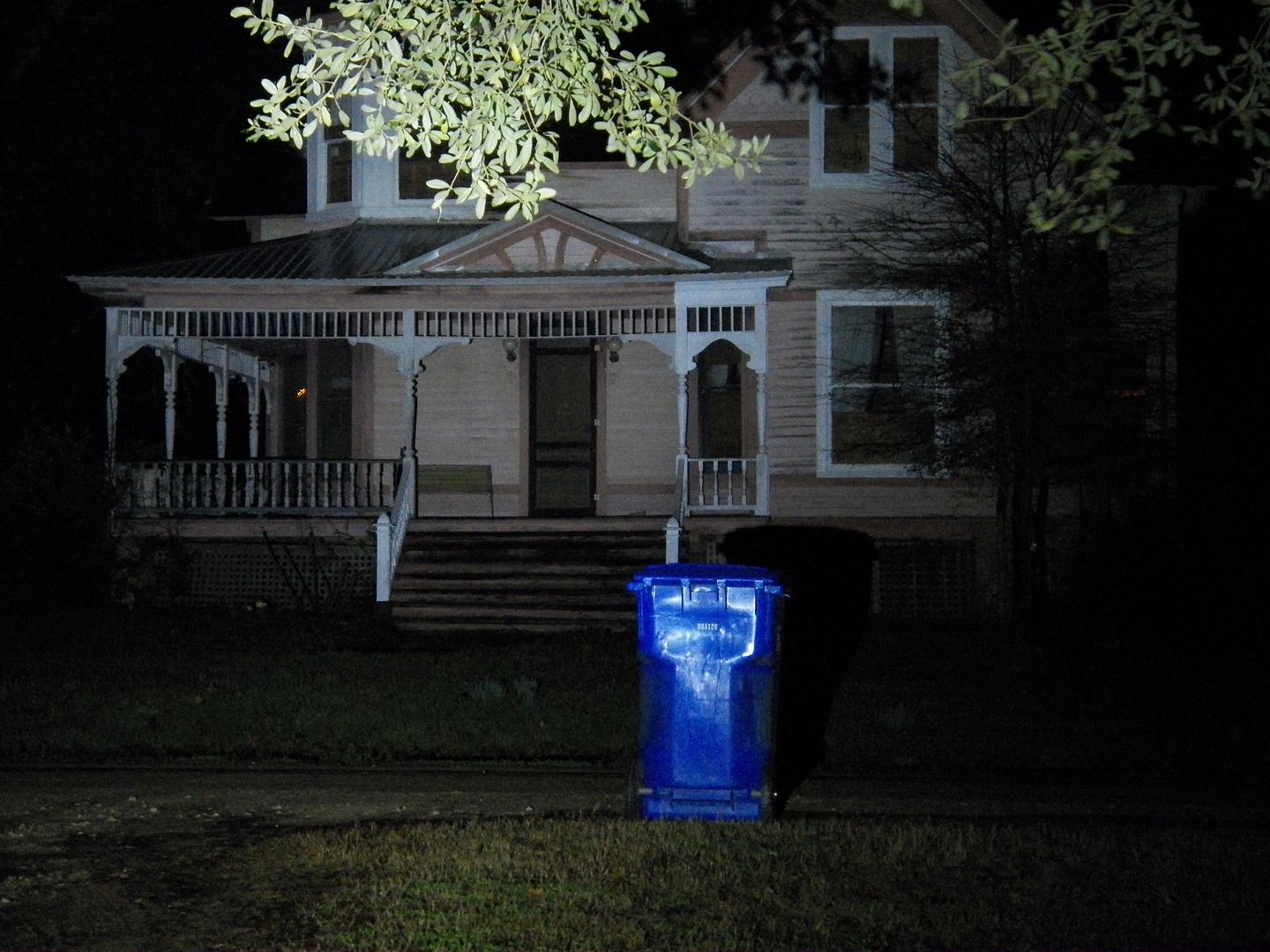
^ Turbo beam shot. Lights is shockingly bright!!!. Picture taken at 9.0 amps on Efest purple 26650/adaptor! 8 amps on MaxToch unprotected INR 26650 4000mAh 4.7 amps on protected KeepPower 26650 5200mAh. ^
(Reserved: For some reason this beamshot didn’t take)
^ High beam shot. Picture taken at 4.1 amps on Efest purple 26650/adaptor. (2 amps on protected KeepPower 26650 5200mAh. 4.1 amps on MaxToch unprotected INR 26650 4000mAh) ^
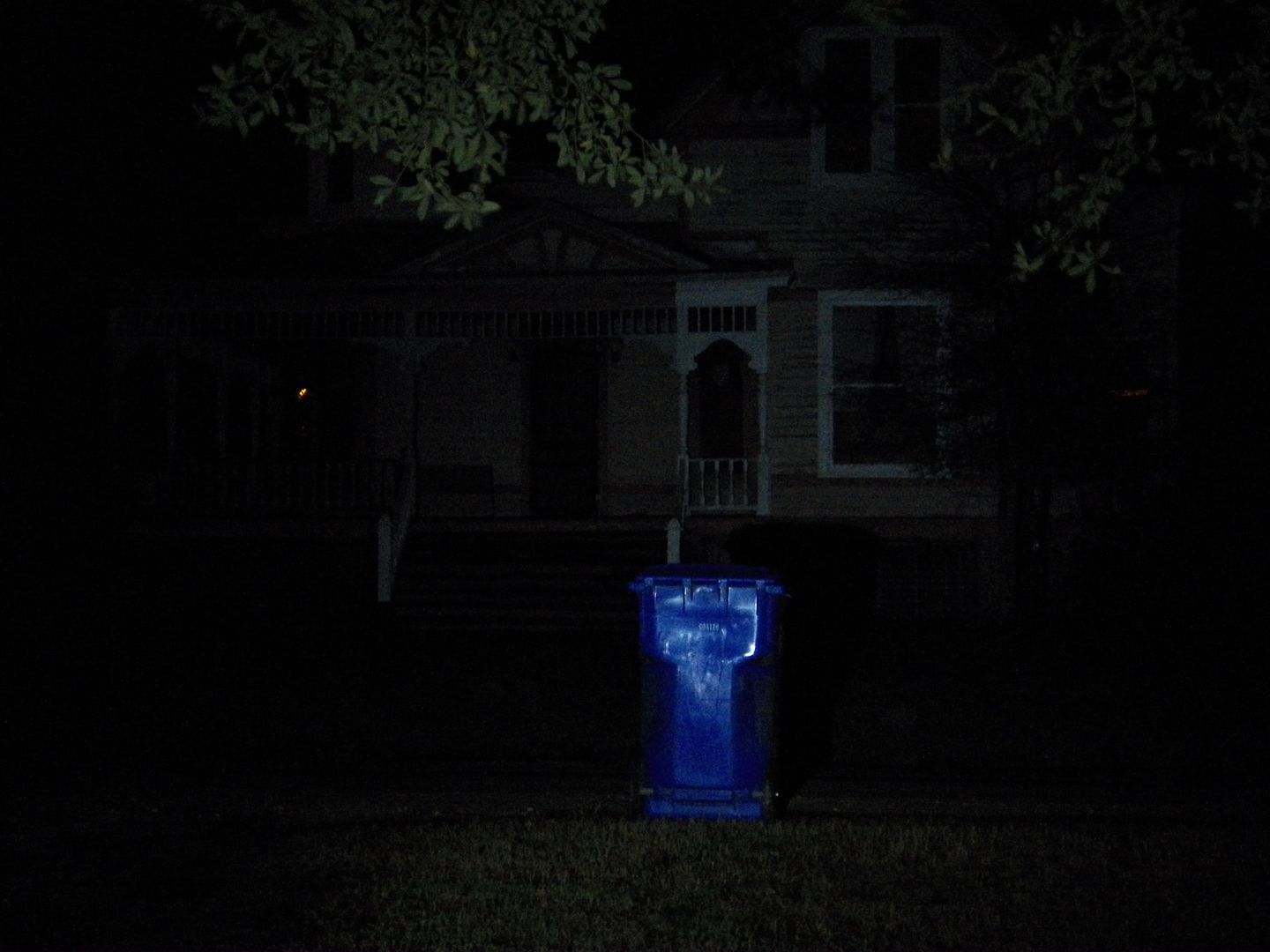
^ Medium beam shot. Picture taken at 1.4 amps on Efest purple 26650/adaptor. (.5 amps on protected KeepPower 26650 5200mAh. 1.5 amps on MaxToch unprotected INR 26650 4000mAh) ^
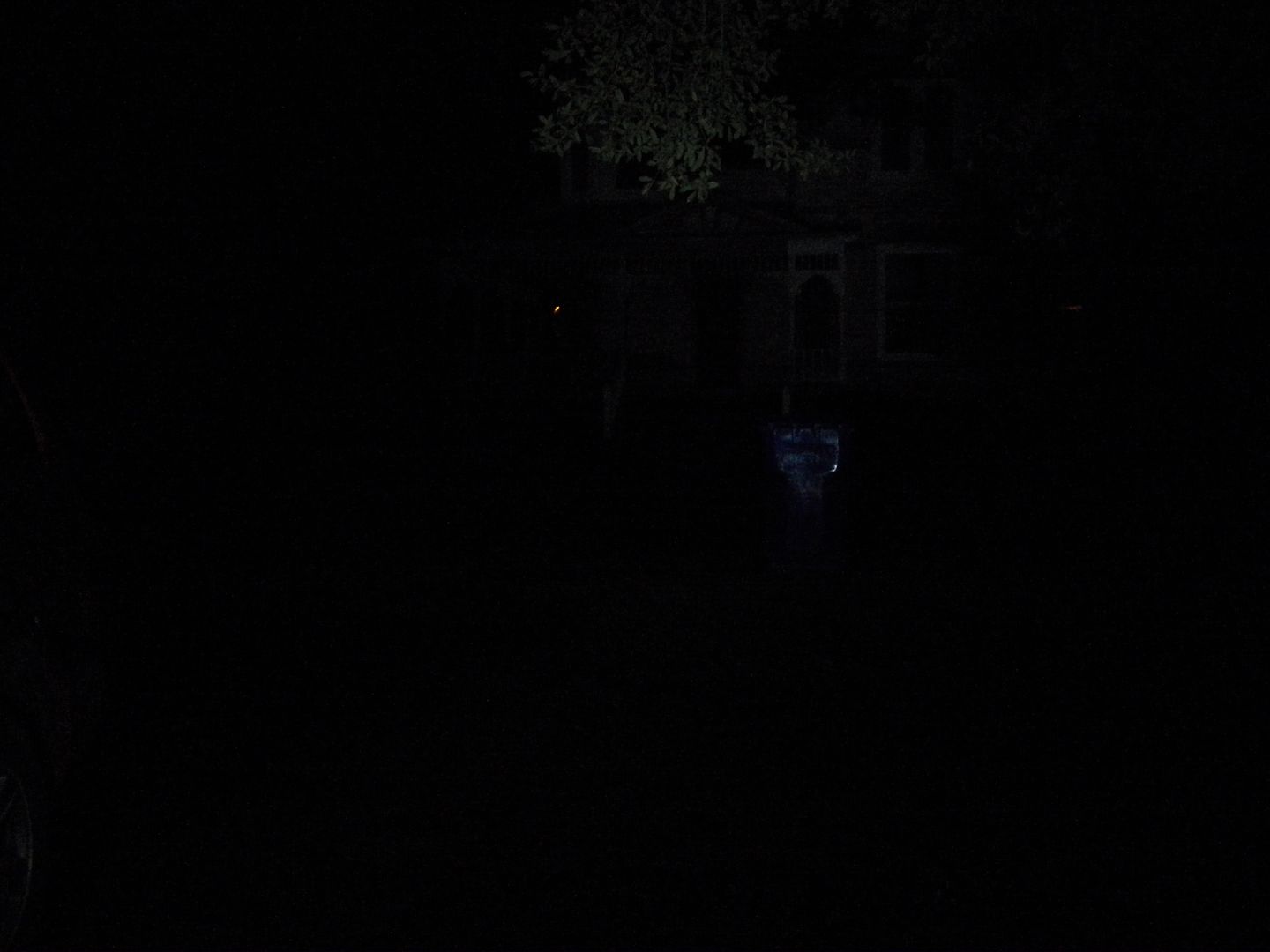
^ Low beam shot. Picture taken at .4 amps on Efest purple 26650/adaptor. (.1 amps on protected KeepPower 26650 5200mAh. .4 amps on MaxToch unprotected INR 26650 4000mAh) ^
SUMMARY
Decent build quality for above water usage, but could be a suspect performer in dive situations. However, for out-of-the-water applications, this is a HUGH performing triple for under $23. Sufficient semi-glossy black HA-II anodization, ample threads, extensive use of seals, somewhat decent thermal path, lockout, 26650 battery…a lot to like here. Machining quality is sufficient for this level of flashlight. Although this light has older emitters, that might actually be a good thing considering the vF issue on newer XM-L2 emitters. Cost is also a major plus for a decent, high amp, triple emitter light. Overall, a nice, bright and versatile light for a budget price…especially at an estimated 2700 OTF lumens.
KRONOMETER patented rating: 4 out of 5.